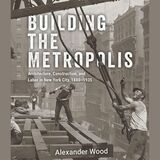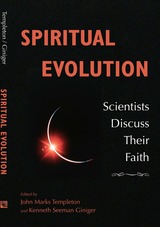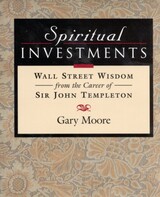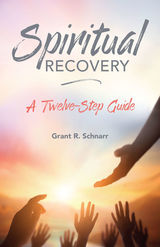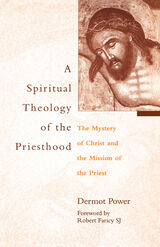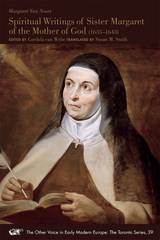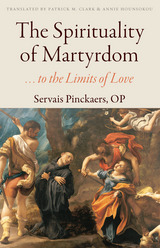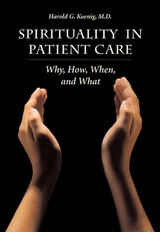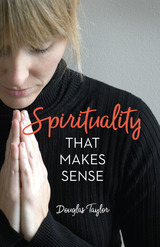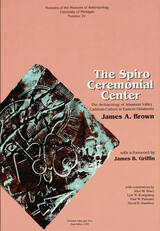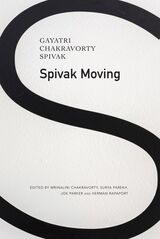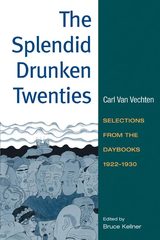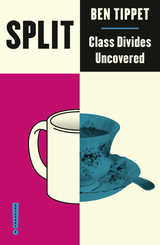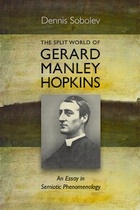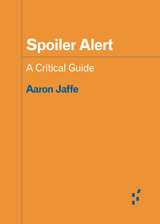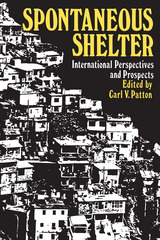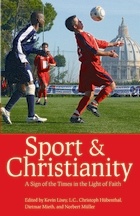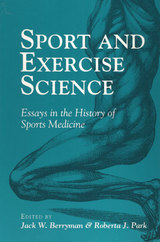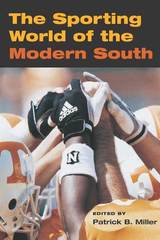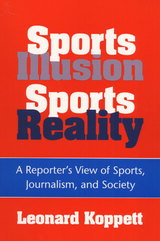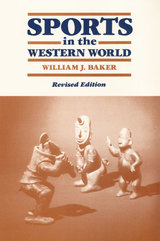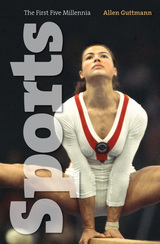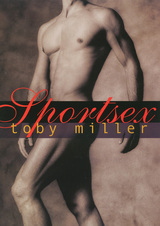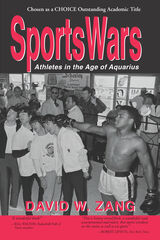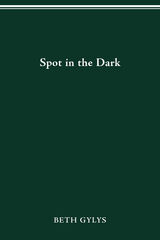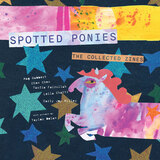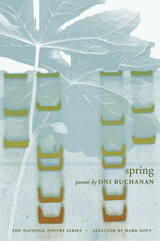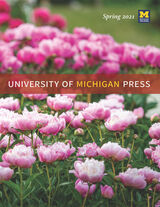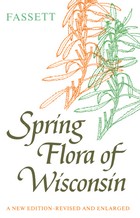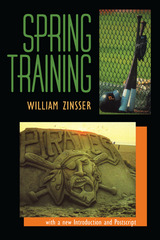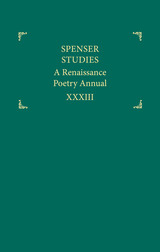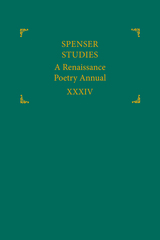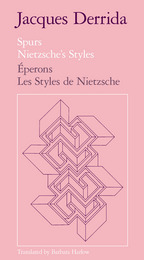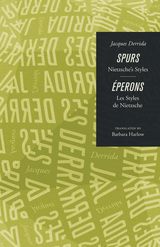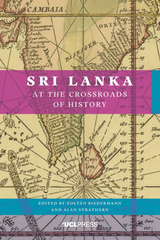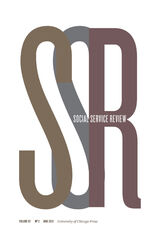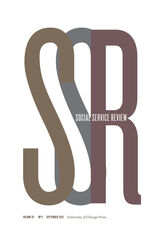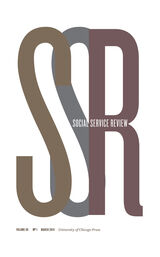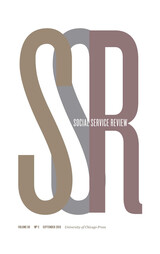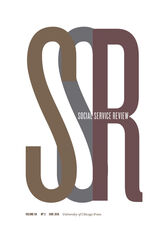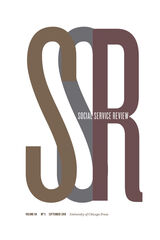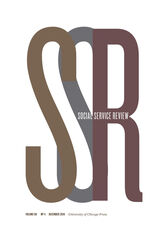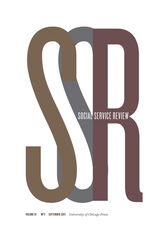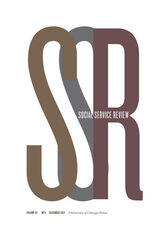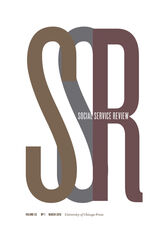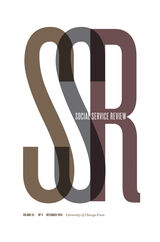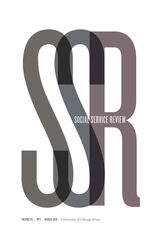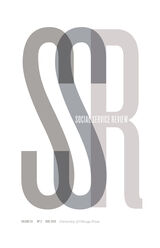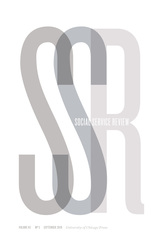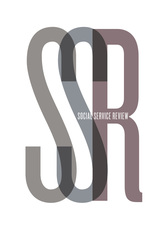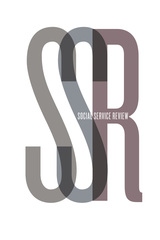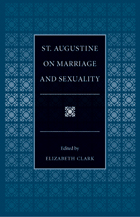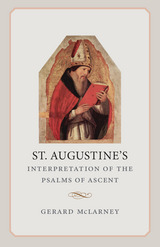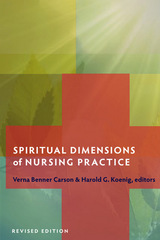 Spiritual Dimensions of Nursing Practice: Revised Edition
Verna Benner Carson
Templeton Press, 2008 Ever since the first edition of Verna Benner Carson's Spiritual Dimensions of Nursing Practice went out of print, second-hand copies have been highly sought after by practitioners in the field and nursing school faculty who appreciated the comprehensive scope of the seminal work on spirituality and health. In this highly anticipated revised edition, Carson and her co-editor, Harold G. Koenig, have thoroughly revised and updated this classic in the field. The revised edition builds on the foundations laid in the first, providing perspectives on new research in the spiritual dimensions of nursing care, applying nursing theory to spiritual care, and addressing the spiritual needs of both nurses and patients. It also examines ethical issues in nursing and the impact of legal decisions on health care issues. Contributors address issues of spiritual development across the entire lifespan—from the spiritual needs and influences of the very young to the elderly, including those facing chronic illnesses or death. The volume takes a similarly broad approach in addressing spiritual issues from a variety of faith backgrounds—including both theistic and pantheistic religious practices, so that nurses can be prepared to meet the needs of patients from various religious traditions.
Second to chaplains, nurses are the major providers of spiritual care, and no other book will serve their needs like Spiritual Dimensions of Nursing Practice.
Spiritual Evolution: Scientists Discuss Their Beliefs
John Marks Templeton
Templeton Press, 1998 Spiritual Evolution: Scientists Discuss Their Beliefs describes the intellectual and emotional journeys traveled by esteemed scientists worldwide. Authors share the personal steps they have taken to blend an understanding of the Divine with their scientific perspectives. Charles Birch, S. Jocelyn Bell Burnell, Larry Dossey, Owen Gingerich, Peter E. Hodgson, Stanley L. Jaki, Arthur Peacocke, John Polkinghorne, Russell Stannard, and Carl Friedrich von Weizsäcker offer accounts of their spirituality and scientific inquiry. Noting the impact of religious upbringing, academic and spiritual mentors, personal devotional practice, and study, these authors make a compelling case for the blending of both scientific and spiritual worlds. They share insights that keep them attending church, engaging in prayer, and continuing the search to understand the Infinite.
 The Spiritual Formation of Seminarians: Learning to Live in Intimate and Unceasing Union with God
James Keating
Catholic University of America Press In this book, Deacon James Keating provides an opportunity for one spiritual director to introduce his mind to the minds of other directors with the hope that his ideas may season their own already developed method of direction. The book does not attend to all the possible realities a director may encounter within his or her training or within the daily execution of this ministry. The author wishes to share his approach to directing seminarians by reflecting upon themes and experiences which regularly appear within direction sessions. Spiritual direction certainly has some universal components to it. All directors want their directees to internalize a habit of prayer, to choose a life of remaining with God, to suffer the vulnerability necessary to know divine love and to then embody that love as heralds of the Gospel. But each director approaches his or her directees from within their own skin, from within a personality that is unique, and by way of a formation that reflects the unique attractions of each director and his or her own sufferings, failures, and fidelities. These unique embodiments no one writer can know or capture in a book. And so, this book simply begins a conversation that the author invites other directors to enter and add to according to their own insights. The spiritual life of those in seminary occupies the integrating center of a projected life of priestly ministry. Time needed to secure an interior life of prayer is one of the key reasons the Church demands years of formation before the celibate state is entered. Such a state in life is entered as a testimony to the reality that God lives and loves. In light of such love a man enters seminary to discern if he desires to surrender his whole life in response to God sharing His own. To live as a cleric without a vital interior life leaves a man in a state of meaninglessness. Instilling the virtue of prayer during priestly formation can help assure that celibate priesthood retains its inspiration and meaning throughout the life of a priest. Spiritual directors minister to assist a future priest to secure a lifetime habit of prayer so as to secure his commitment to communicate with the living God.
Spiritual Herstories: Call of the Soul in Dance Research
Edited by Amanda Williamson and Barbara Sellers-Young
Intellect Books, 2019 This is a collection of works by internationally recognized women leading the field of dance research and spirituality across the globe. Building on current soulful research scholarship in the discipline, these authors offer extensive and detailed research into spirituality, dance, gender, religion, and somatics. Written by women dance scholars in higher education, this evocative and illuminating work highlights a growing discourse on gendered leadership in dance research. Spiritual Herstories provides new pathways and innovative research methods that respond to the educational needs of women emerging in male-centric socio-historic research traditions.
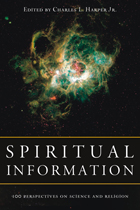 Spiritual Information: 100 Perspectives on Science and Religion
Charles L. Harper Jr.
Templeton Press, 2005
Spiritual Information is a collection of one hundred essays that explore a portion of the vast interdisciplinary approaches to the study of science and religion. Individually and together, the essays show how the study of ourselves, our planet, and the universe helps us understand our place as spiritual beings within God’s universe.
The book is a tribute to Sir John Templeton and his pioneering commitment toward new research that results in “one hundredfold more spiritual information than humankind has ever possessed before.” It begins with essays that reflect on Sir John’s principal domains of interest and expertise: free-enterprise based finance and accelerating spiritual progress.
Themes of the sections are:
•Science-Religion Dialogue
•Cosmology, Physics, and Astronomy
•Mathematics, Musicology, and Speculation
•Biological Evolution—the Human Being
•Social Evolution—the Human Mind and Heart
•Religion and Health
•The Nature of the Divine
•Theology and Philosophy
•Faith Traditions
“Sir John’s leadership has enabled us to edge ever closer to the frontier where knowledge meets wisdom at the threshold of ‘ultimate reality,’” notes the editor in the preface to this volume. As Spiritual Information presents an overview of how far we have come in the science and religion dialogue, it also opens windows to the vast possibilities for additional research and further advances in spiritual information.
Spiritual Investments: Wall Street Wisdom From Sir John
Gary Moore
Templeton Press, 1998 Gathered here are seventeen sound investment principles that will help people make sensible choices for financial security. What is surprising, however, is how applicable these principles are to life. Sir John Templeton, founder of the Templeton Mutual Funds, shares the basic rules he has used to create the world's best-performing mutual funds. For the first time, the underlying moral or spiritual principle is also explained to investors.
Through the inspiration of this accessible book, we can see how interconnected our money is with the other choices we make in our lives. Through a consistent pattern of decision making, we can learn to judge the true value of our investments—materially and spiritually. Using these simple guidelines, we can learn to create peace and harmony in our approach to life and, at the same time, create financial security.
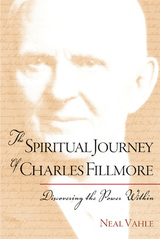 The Spiritual Journey of Charles Fillmore: Discovering the Power Within
Neal Vahle
Templeton Press, 2008 The Spiritual Journey of Charles Fillmore sheds new light on the life and work of an essential spiritual pioneer. In this landmark new biography, author Neal Vahle uses thorough new research, interviews with those who knew Fillmore, and his intimate familiarity with Fillmore's writings to introduce readers to the intriguing cofounder of the Unity movement. Beyond standard biography, Vahle's comprehensive treatment also extensively details Fillmore's era's philosophical and spiritual landscape. It gives readers an excellent overview of the metaphysical movement's evolution through time. While it will serve as an excellent introduction for new students of the New Thought movement, even devoted enthusiasts will discover previously unknown dimensions of Fillmore's teachings in passages drawn from the archives of Unity magazine and other sources. This work, together with Vahle's earlier books Torch-bearer to Light the Way: The Life of Myrtle Fillmore (Open View, 1996) and The Unity Movement: Its Evolution and Spiritual Teaching (Templeton Foundation Press, 2002), established him as the premier historian of the Unity movement.
The Spiritual Life and Other Writings
Camilla Battista Da Varano
Iter Press, 2023 A new edition of all of de Varano's known works, several of which have never before appeared in English.
Camilla Battista da Varano (1458–1524) was a Franciscan nun and the author of profound spiritual writings in both prose and verse. Raised in the princely household of Camerino in north-central Italy, she put her thorough humanist education to use explaining her own spiritual experience and delivering advice to others. Varano composed ecstatic revelations, prayers, poems, hagiography, spiritual direction, and commentary on convent legislation. She drew on a wide variety of sources, including scripture and Church Fathers, plus popular literature and proverbs. Varano was an erudite woman of considerable complexity, defying many of the commonplace images we associate with religious women of the late fifteenth and early sixteenth centuries.
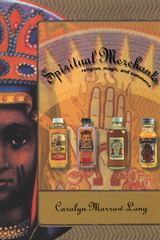 Spiritual Merchants: Religion, Magic and Commerce
Carolyn Morrow Long
University of Tennessee Press, 2001 They can be found along the side streets of many American cities: herb or candle shops catering to practitioners of Voodoo, hoodoo, Santería, and similar beliefs. Here one can purchase ritual items and raw materials for the fabrication of traditional charms, plus a variety of soaps, powders, and aromatic goods known in the trade as “spiritual products.” For those seeking health or success, love or protection, these potions offer the power of the saints and the authority of the African gods.
In Spiritual Merchants, Carolyn Morrow Long provides an inside look at the followers of African-based belief systems and the retailers and manufacturers who supply them. Traveling from New Orleans to New York, from Charleston to Los Angeles, she takes readers on a tour of these shops, examines the origins of the products, and profiles the merchants who sell them.
Long describes the principles by which charms are thought to operate, how ingredients are chosen, and the uses to which they are put. She then explores the commodification of traditional charms and the evolution of the spiritual products industry—from small-scale mail order "doctors" and hoodoo drugstores to major manufacturers who market their products worldwide. She also offers an eye-opening look at how merchants who are not members of the culture entered the business through the manufacture of other goods such as toiletries, incense, and pharmaceuticals. Her narrative includes previously unpublished information on legendary Voodoo queens and hoodoo workers, as well as a case study of John the Conqueror root and its metamorphosis from spirit-embodying charm to commercial spiritual product.
No other book deals in such detail with both the history and current practices of African-based belief systems in the United States and the evolution of the spiritual products industry. For students of folklore or anyone intrigued by the world of charms and candle shops, Spiritual Merchants examines the confluence of African and European religion in the Americas and provides a colorful introduction to a vibrant aspect of contemporary culture.
The Author: Carolyn Morrow Long is a preservation specialist and conservator at the the Smithsonian Institution’s National Museum of American History.
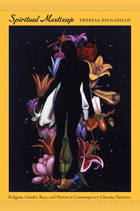 Spiritual Mestizaje: Religion, Gender, Race, and Nation in Contemporary Chicana Narrative
Theresa Delgadillo
Duke University Press, 2011 Gloria Anzaldúa’s narrative and theoretical innovations, particularly her concept of mestiza consciousness, have influenced critical thinking about colonialism, gender, history, language, religion, sexuality, spirituality, and subjectivity. Yet Anzaldúa’s theory of spiritual mestizaje has not been extensively studied until now. Taking up that task, Theresa Delgadillo reveals spiritual mestizaje as central to the queer feminist Chicana theorist’s life and thought, and as a critical framework for interpreting contemporary Chicana literary and visual narratives. First mentioned by Anzaldúa in her pioneering book Borderlands/La Frontera, spiritual mestizaje is a transformative process of excavating bodily memory to develop a radical, sustained critique of oppression and renew one’s relation to the sacred. Delgadillo analyzes the role of spiritual mestizaje in Anzaldúa’s work and in relation to other forms of spirituality and theories of oppression. Illuminating the ways that contemporary Chicana narratives visualize, imagine, and enact Anzaldúa’s theory and method of spiritual mestizaje, Delgadillo interprets novels, memoir, and documentaries. Her critical reading of literary and visual technologies demonstrates how Chicanas challenge normative categories of gender, sexuality, nation, and race by depicting alternative visions of spirituality.
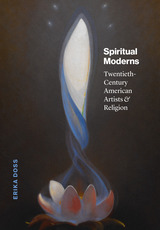 Spiritual Moderns: Twentieth-Century American Artists and Religion
Erika Doss
University of Chicago Press, 2022 Examines how and why religion matters in the history of modern American art.
Andy Warhol is one of the best-known American artists of the twentieth century. He was also an observant Catholic who carried a rosary, went to mass regularly, kept a Bible by his bedside, and depicted religious subjects throughout his career. Warhol was a spiritual modern: a modern artist who appropriated religious images, beliefs, and practices to create a distinctive style of American art.
Spiritual Moderns centers on four American artists who were both modern and religious. Joseph Cornell, who showed with the Surrealists, was a member of the Church of Christ, Scientist. Mark Tobey created pioneering works of Abstract Expressionism and was a follower of the Bahá’í Faith. Agnes Pelton was a Symbolist painter who embraced metaphysical movements including New Thought, Theosophy, and Agni Yoga. And Warhol, a leading figure in Pop art, was a lifelong Catholic. Working with biographical materials, social history, affect theory, and the tools of art history, Doss traces the linked subjects of art and religion and proposes a revised interpretation of American modernism.
Spiritual Recovery: A Twelve-Step Guide
Grant Schnarr
Swedenborg Foundation Publishers, 1998 Twelve-step programs, which are based on psychological and spiritual growth, serve all who desire a path to freedom from destructive tendencies and consequent suffering. Using a twelve-step approach, Grant Schnarr presents readers with the tools needed to live a life guided by a greater awareness of both others and self. Filled with practical advice for incorporating these twelve principles into one’s life, Spiritual Recovery provides a road map for developing a deeper relationship with God and experiencing greater joy.
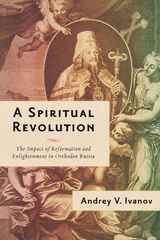 A Spiritual Revolution: The Impact of Reformation and Enlightenment in Orthodox Russia, 1700–1825
Andrey V. Ivanov
University of Wisconsin Press, 2023 The ideas of the Protestant Reformation, followed by the European Enlightenment, had a profound and long-lasting impact on Russia’s church and society in the eighteenth century. Though the traditional Orthodox Church was often assumed to have been hostile toward outside influence, Andrey V. Ivanov’s study argues that the institution in fact embraced many Western ideas, thereby undergoing what some observers called a religious revolution.
Embedded with lively portrayals of historical actors and vivid descriptions of political details, A Spiritual Revolution is the first large-scale effort to fully identify exactly how Western progressive thought influenced the Russian Church. These new ideas played a foundational role in the emergence of the country as a modernizing empire and the rise of the Church hierarchy as a forward-looking agency of institutional and societal change. Ivanov addresses this important debate in the scholarship on European history, firmly placing Orthodoxy within the much wider European and global continuum of religious change.
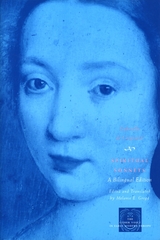 Spiritual Sonnets: A Bilingual Edition
Gabrielle de Coignard
University of Chicago Press, 2003 Born into a wealthy family in Toulouse, Gabrielle de Coignard (ca. 1550-86) married a prominent statesman in 1570. Widowed three years later, with two young daughters to raise, Coignard turned to writing devotional verse to help her cope with her practical and spiritual struggles.
Spiritual Sonnets presents the first English translation of 129 of Coignard's highly autobiographical poems, giving us a startlingly intimate view into the life and mind of this Renaissance woman. The sonnets are all written "in the shadow of the Cross" and include elegies, penitential lyrics, Biblical meditations, and more. Rich with emotion, Coignard's poems reveal anguished moments of loneliness and grief as well as ecstatic experiences of mystical union. They also reveal her mastery of sixteenth-century literary conventions and spiritual traditions.
This edition, printed in bilingual format with Melanie E. Gregg's translations facing the French originals, will be welcomed by teachers and students of poetry, French literature, women's studies, and religious and Renaissance studies.
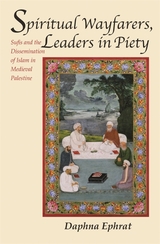 Spiritual Wayfarers, Leaders in Piety: Sufis and the Dissemination of Islam in Medieval Palestine
Daphna Ephrat
Harvard University Press, 2008 This book represents the first continuous history of Sufism in Palestine. Covering the period between the rise of Islam and the spread of Ottoman rule and drawing on vast biographical material and complementary evidence, the book describes the social trajectory that Sufism followed. The narrative centers on the process by which ascetics, mystics, and holy figures living in medieval Palestine and collectively labeled “Sufis,” disseminated their traditions, formed communities, and helped shape an Islamic society and space. The work makes an original contribution to the study of the diffusion of Islam’s religious traditions and the formation of communities of believers in medieval Palestine, as well as the Islamization of Palestinian landscape and the spread of popular religiosity in this area.
The study of the area-specific is placed within the broader context of the history of Sufism, and the book is laced with observations about the historical-social dimensions of Islamic mysticism in general. Central to its subject matters are the diffusion of Sufi traditions, the extension of the social horizons of Sufism, and the emergence of institutions and public spaces around the Sufi friend of God. As such, the book is of interest to historians in the fields of Sufism, Islam, and the Near East.
Spiritual Writings of Sister Margaret of the Mother of God (1635-1643)
Margaret Van Noort
Iter Press, 2015 In 1635, as directed by her confessor so that he might understand “the state of her soul,” Margaret Van Noort, a lay sister of the royal convent of Discalced Carmelite nuns in Brussels, composed her spiritual autobiography. This text was followed by two diaries in 1636 and 1637 recording the workings of her inner life and relation to God, and reflecting the cosmopolitan Catholic tradition of her homeland. Now gathered in this volume, these works illustrate Margaret’s development from a troubled young lay sister into a woman of spiritual experience and authority.
The Spiritualiity of Martyrdom
Servais Pinckaers
Catholic University of America Press, 2016 Originally published in French in 2000, The Spirituality of Martyrdom is a brief and accessible yet sweeping study of the spiritual significance attached to martyrdom in the early centuries of the Christian Church. Although studies of early Christian martyrdom have proliferated in recent decades, this book stands out by conveying to a wider audience the essence of this spirituality in its relevance to both theology and the life of every astute Christian today.
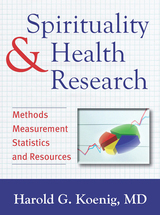 Spirituality and Health Research: Methods, Measurements, Statistics, and Resources
Harold G Koenig
Templeton Press, 2011 In Spirituality and Health Research: Methods, Measurement, Statistics, and Resources, Dr. Harold G. Koenig leads a comprehensive overview of this complex subject. Dr. Koenig is one of the world’s leading authorities on the relationship between spirituality and health, and a leading researcher on the topic. As such, he is distinctively qualified to author such a book. This unique source of information on how to conduct research on religion, spirituality, and health includes practical information that goes well beyond what is typically taught in most undergraduate, graduate, or even post-doctoral level courses. This volume reviews what research has been done, discusses the strengths and limitations of that research, provides a research agenda for the future that describes the most important studies that need to be done to advance the field, and describes how to actually conduct that research (design, statistical analysis, and publication of results). It also covers practical matters such as how to write fundable grants to support the research, where to find sources of funding support for research in this area, and what can be done even if the researcher has little or no funding support.
The information gathered together here, which has been reviewed for accuracy and comprehensiveness by research design and statistical experts, has been acquired during a span of over twenty-five years that Dr. Koenig spent conducting research, reviewing others’ research, reviewing research grants, and interacting with mainstream biomedical researchers both within and outside the field of spirituality and health. The material is presented in an easy to read and readily accessible form that will benefit researchers at almost any level of training and experience.
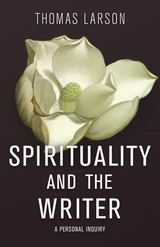 Spirituality and the Writer: A Personal Inquiry
Thomas Larson
Ohio University Press, 2019 Today, the surprisingly elastic form of the memoir embraces subjects that include dying, illness, loss, relationships, and self-awareness. Writing to reveal the inner self—the pilgrimage into one’s spiritual and/or religious nature—is a primary calling. Contemporary memoirists are exploring this field with innovative storytelling, rigorous craft, and new styles of confessional authorship. Now, Thomas Larson brings his expertise as a critic, reader, and teacher to the boldly evolving and improvisatory world of spiritual literature. In his book-length essay Spirituality and the Writer, Larson surveys the literary insights of authors old and new who have shaped religious autobiography and spiritual memoir—from Augustine to Thomas Merton, from Peter Matthiessen to Cheryl Strayed. He holds them to an exacting standard: they must render transcendent experience in the writing itself. Only when the writer’s craft prevails can the fleeting and profound personal truths of the spirit be captured. Like its predecessor, Larson’s The Memoir and the Memoirist,Spirituality and the Writer will find a home in writing classrooms and book groups, and be a resource for students, teachers, and writers who seek guidance with exploring their spiritual lives.
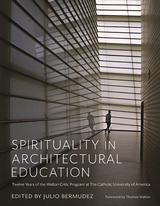 Spirituality in Architectural Education: Twelve Years of the Walton Critic Program at The Catholic University of America
Julio Bermudez
Catholic University of America Press, 2021 How does spirituality enter the education of an architect? Should it? What do we mean by ‘spirituality’ in the first place? Isn’t architectural education a training ground for professional practice and, therefore, technically and secularly oriented? Is there even room to add something as esoteric if not controversial as spirituality to an already packed university curriculum? The humanistic and artistic roots of architecture certainly invite us to consider dimensions well beyond the instrumental, including spirituality. But how would we teach such a thing? And why, if spirituality is indeed relevant to learning architecture, have we heard so little about it?
Spirituality in Architectural Education addresses these and many other important philosophical, disciplinary, pedagogic, and practical questions. Grounded on the twelve-year-old Walton Critic Program at the Catholic University of America School of Architecture and Planning, this book offers solid arguments and insightful reflections on the role that “big questions” and spiritual sensibility ought to play in the architectural academy today. Using 11 design studios as stopping grounds, the volume takes the reader into a journey full of meaningful interrogations, pedagogic techniques, challenging realizations, and beautiful designs. Essays from renowned architects Craig W. Hartman, Juhani Pallasmaa, Alberto Campo Baeza, Claudio Silvestrin, Eliana Bórmida, Michael J. Crosbie, Prem Chandavarkar, Rick Joy, Susan Jones, and Daniel Libeskind open new vistas on the impact of spirituality in architectural education and practice. All this work is contextualized within the ongoing discussion of the role of spirituality and religion in higher education at large. The result is an unprecedented volume that starts a long-awaited conversation that will advance architectural schooling. ACSA Distinguished Professor Julio Bermudez, with recognized expertise on spirituality in architecture, will be the guide in this fascinating and contemplative journey.
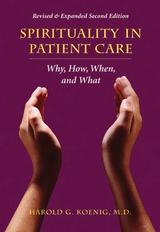 Spirituality in Patient Care: Why, How, When, and What
Harold G Koenig
Templeton Press, 2007 This landmark handbook for health professionals interested in identifying and addressing the spiritual needs of patients has been significantly revised and expanded. Over the past five years, since the first edition was written, there has been increased research on the relationships among religion, spirituality, and health, and further discussions on the application of these findings to clinical practice. Every section of the book has been rewritten and updated with current research. "I think this version will be my most important contribution to the field of spirituality and health," says Dr. Koenig. "Every bit of what I know about the integration of spirituality into clinical practice, learned over twenty years, is contained in this book." Koenig addresses the whys, hows, whens, and whats of patient-centered integration of spirituality into patient care, including details on the health-related sacred traditions for each major religious group. He provides health care professionals with the training necessary to screen patients sensitively and competently for spiritual needs, begin to communicate with patients about these issues, and learn when to refer patients to trained spiritual-care professionals who can competently address spiritual needs. New sections specifically address mental-health professionals, nurses, chaplains and pastoral counselors, social workers, and occupational and physical therapists. A ten-session model course curriculum on spirituality and health care for medical students and residents is provided, with suggestions on how to adapt it for the training of nurses, social workers, and rehabilitation specialists.
Spirituality In Patient Care: Why, How, When, and What
Harold Koenig
Templeton Press, 2002 This book is intended as a guide for practicing physicians, medical students, and residents to help identify and address the spiritual needs of patients. Those who will benefit most will be physicians who wish to know how to integrate spirituality into clinical practice in an effective and sensitive manner. Other professionals, such as nurses and chaplains, may use this book as they interact with doctors, other health professionals, and hospital administrators.
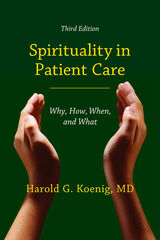 Spirituality in Patient Care: Why, How, When, and What
Harold G Koenig
Templeton Press, 2013 Praise for the previous edition: “I highly recommend this book as reading for all physicians and would certainly recommend it for any course on medical ethics and/or required reading for any medical student.”—Journal of the National Medical Association Since the publication of the first edition of Spirituality in Patient Care in 2002, the book has earned a reputation as the authoritative introduction to the subject for health professionals interested in identifying and addressing the spiritual needs of patients. The body of research on religion, spirituality, and health continues to grow at a dramatic rate, creating an urgent need for a new edition of this landmark work. In this, the third edition, Harold G. Koenig, M.D., updates every chapter by incorporating the newest research and introducing sensible ways of translating that research into caring for patients. Like previous editions, this new one addresses the whys, hows, whens, and whats of patient-centered integration of spirituality into patient care so that health professionals, including physicians in primary care and the medical and surgical specialties, can utilize this information in clinical practice. Whole chapters are also included offering profession-specific information for nurses, clergy, mental health professionals, social workers, and occupational and physical therapists. Other chapters address topics like culturally and spiritually sensitive care for each major religious group, potential limitations or barriers to application, and even what may happen when research on spirituality and health is misapplied. Throughout these chapters, readers will find new case histories and clinical examples on how to integrate spirituality into patient care depending on their particular circumstances. A ten-session model course curriculum on spirituality and health care for medical students and residents is also provided, with suggestions on how to adapt it for nursing, social work, physical and occupational therapy, and mental health training programs. For more than ten years Spirituality in Patient Care has offered sound guidance to anyone wishing to do more than simply treat their patients’ physical symptoms. Treating the whole patient often requires becoming something more than just a skilled technician. With this new edition, Dr. Koenig once again shows the way for any health professional seeking to bridge this gap and help patientsregain their lives by finding hope, meaning, and healing.
SPIRITUALITY THAT MAKES SENSE
DOUGLAS TAYLOR
Swedenborg Foundation Publishers, 2000
As a young schoolteacher, Douglas Taylor turned to the teachings of Swedish visionary Emanuel Swedenborg (1688-1772) because Swedenborg's language of symbol made perfect sense to him as a way to understand the Bible. Taylor's book is an easily understood overview of Swedenborgian thought -- a theology that "makes sense." Developing a clear idea of God, Taylor says, "is of supreme importance and has consequences to eternity."
This book explores the concepts of the Creator as Redeemer, the spiritual world, redemption, and the Trinity. Taylor looks at personal morality in Swedenborgian terms, addressing such concerns as the nature of evil, how to escape from evil feelings, and why we must take responsibility for our actions.
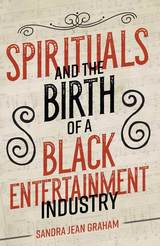 Spirituals and the Birth of a Black Entertainment Industry
Sandra Jean Graham
University of Illinois Press, 2018 Spirituals performed by jubilee troupes became a sensation in post-Civil War America. First brought to the stage by choral ensembles like the Fisk Jubilee Singers, spirituals anchored a wide range of late nineteenth-century entertainments, including minstrelsy, variety, and plays by both black and white companies. In the first book-length treatment of postbellum spirituals in theatrical entertainments, Sandra Jean Graham mines a trove of resources to chart the spiritual's journey from the private lives of slaves to the concert stage. Graham navigates the conflicting agendas of those who, in adapting spirituals for their own ends, sold conceptions of racial identity to their patrons. In so doing they lay the foundation for a black entertainment industry whose artistic, financial, and cultural practices extended into the twentieth century. A companion website contains jubilee troupe personnel, recordings, and profiles of 85 jubilee groups. Please go to: http://www.press.uillinois.edu/books/graham/spirituals/
The Spiro Ceremonial Center: The Archaeology of Arkansas Valley Caddoan Culture in Eastern Oklahoma, Vols. 1 and 2
James A. Brown with a foreword by James B. Griffin
University of Michigan Press, 1996 In Volume I of this two-volume set, James A. Brown reports on and interprets decades of archaeological investigation at the Spiro Ceremonial Center, a major site along the Arkansas River in eastern Oklahoma. In Volume 2, he describes the archaeological collections in detail, covering burials, ceramics, stone tools, pipes, beads, textiles, ornaments, and animal bone. Foreword by James B. Griffin. Contributions by Alice M. Brues, Lyle W. Konigsberg, Paul W. Parmalee, and David H. Stansbery.
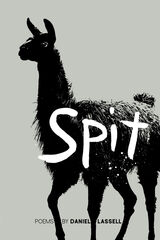 Spit
Daniel Lassell
Michigan State University Press, 2021 The first-ever poetry book set on a llama farm, Daniel Lassell’s debut collection, Spit, examines the roles we play in the act of belonging. It is a portrait of a boy living on a farm populated with chickens sung to sleep by lullaby, captive wolves next door that attack a child, and a herd of llamas learning to survive despite coyotes and a chaotic family. The collection in part explores the role of the body in health and illness and one’s treatment of the earth and others. A theme of spirituality also weaves throughout the collection as the speaker treks into adulthood, yearning for peace amid the decline of his parents’ marriage. Driven by a “wish to visit / some landless landscape,” the speaker eventually leaves his family’s farm, only to find that return is impossible. After losing the farm and the llama herd to his parents’ divorce, the speaker wrestles with the role of presence as it relates to healing, remarking, “I wish enough, / to have only // these memories I have.” Unflinching at every turn, the collection pushes the boundaries of “home” to arrive upon new meaning, definition, and purpose.
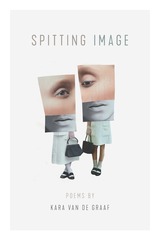 Spitting Image
Kara van de Graaf
Southern Illinois University Press, 2018 Kara van de Graaf’s debut collection heralds the arrival of an essential new voice in contemporary poetry. Through poems that balance personal recollection with ekphrasis, science, and meditation, Van de Graaf searches for answers in the fluctuating relationship between the body and the self.
Taking as its primary theme the exploration of the female body in current culture, Spitting Image considers the myriad intersections of the body and gender, desire, relationships, and otherness. Van de Graaf interrogates underrepresented elements of the female experience, especially the physical, rhetorical, and aesthetic limitations of fatness in poetry and other arts. She then complicates those limitations through her use of innovative forms and imaginative verse, implicitly calling for poetry to engage with the female form in fresh ways. Throughout, Van de Graaf’s poems ask: In a time where we have more agency to define ourselves than ever before, what barriers still remain? What do our bodies mean to who we are?
At turns oblique and direct, Van de Graaf’s poems strive to create space for themselves not only in the field of contemporary poetry but also in a larger world that has been prone to ignoring or shaming women for their bodies. That these poems succeed on both counts is a testament to this remarkable new poet, who claims “That millimeter of space that means / all of us are apart, that means / we can never really touch / anything. . . . Yes, I want that, too.”
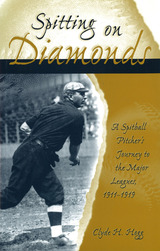 Spitting on Diamonds: A Spitball Pitcher's Journey to the Major Leagues, 1911-1919
Clyde H. Hogg
University of Missouri Press, 2005
Spitball n., an illegal pitch in which a foreign substance (spit or Vaseline) is applied to the ball by the pitcher before it is thrown.
Dead ballera n., a time period during baseball, usually regarded as 1900–1919, when the game used a "dead" or almost soft ball during play. Usually, the same ball was used for the entire game.
In 1911, when Bradley Hogg began his major-league pitching career for the National League’s Boston Rustlers, baseball was a different game. Hogg played during a time known as the dead ball era, when a pitcher could spit on, shine up, or even roughen a ball to secure an advantage over a hitter. Although only seven World Series had been played at that point, the names of the best and most colorful players remain familiar today: Cy Young, Casey Stengel, Honus Wagner, Rogers Hornsby, and Christy Mathewson.
During his major and minor league career, Hogg played with or against twenty-seven Hall of Fame ballplayers and under the critical gaze of two Hall of Fame umpires and eleven Hall of Fame sportswriters. In Spitting on Diamonds, Clyde Hogg details the life of baseball’s everyman, including excerpts from newspapers throughout the country to bring to life the times in which Bradley Hogg played. The author shows how Hogg’s career is representative of the thousands of men who have played professional baseball since its inception more than 125 years ago, men who didn’t make it into the Hall of Fame or win awards but made it possible for millions of fans to enjoy the game. These players were the flannelled hosts of America’s favorite pastime and the ones who made the game what it was and is today.
The author uses Hogg’s career as a spitball pitcher in leagues from coast to coast to show the rapid change and growth of our nation between 1910 and 1920. With enough baseball statistics to satisfy even the most hard-core fan, this time capsule of early-twentieth-century America will appeal to sports enthusiasts and readers of general historical nonfiction alike. They will find in its pages an America now visible only in faded photographs, along with a version of the national pastime that no longer exists. Featuring multiple bunts, double steals, inside pitching, and the now outlawed “spitball,” as well as the skill it took to hit such deliveries, this game was hard, fast, and nonstop. Spitting on Diamonds lets the reader understand what it was like to live and play professional sports when America and its national pastime were coming of age.
Spivak Moving
Gayatri Chakravorty Spivak
Seagull Books, 2022 This collection offers a broad range of Spivak’s recent essays, lectures, and other writings that speak to her groundbreaking work in feminism, deconstruction, Marxism, and subaltern studies.
The pieces collected in Spivak Moving touch on a variety of topics, including her crucial thinking on pan-Africanism and W. E. B. DuBois, reproductive heteronormativity, art and film, class apartheid in education, practices of institutional critique, and the training of imaginative activism through a sustained engagement with the humanities. She moves from a look at the unsystematized first languages of continental Africa into a broader consideration of human rights, international civil society practice, the question of terror, the “freedom” of the academic, and the place of the digital. About half the essays are collected here for the first time and are not found in Spivak’s several published essay collections.
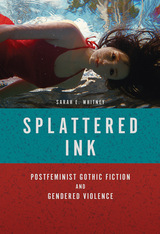 Splattered Ink: Postfeminist Gothic Fiction and Gendered Violence
Sarah E Whitney
University of Illinois Press, 2016 In-depth and refreshingly readable, Splattered Ink is a bold analysis of postfeminist gothic, a literary genre that continues to jar readers, reject happy endings, and find powerful new ways to talk about violence against women. Sarah E. Whitney explores the genre's challenge to postfeminist assumptions of women's equality and empowerment. The authors she examines--Patricia Cornwell, Jodi Picoult, Susanna Moore, Sapphire, and Alice Sebold--construct narratives around socially invisible and physically broken protagonists who directly experience consequences of women's ongoing disempowerment. Their works ask readers to inhabit women's suffering and to face the uncomfortable, all-too-denied fact that today's women must navigate lives fraught with risk. Whitney's analysis places the authors within a female gothic tradition that has long given voice to women's fears of their own powerlessness. But she also reveals the paradox that allows the genre to powerfully critique postfeminism's often sunshiney outlook while uneasily coexisting within the same universe.
The Splendid Drunken Twenties: Selections from the Daybooks, 1922 - 30
Carl Van Vechten
University of Illinois Press, 2002 A startling record of the Jazz Age through the eyes of one of its memorable figures Between 1922 and 1930, Carl Van Vechten--one of the most significant figures of the Harlem Renaissance--kept a daily record of his activities. The records recount his day-to-day life, as well as the alliances, drinking habits, feuds, and affairs of a wide number of the period's luminaries, providing a rich resource for reconstructing the culture of 1920s New York and the social milieu during Prohibition. Bruce Kellner has provided copious informative notes identifying central figures and clarifying details.
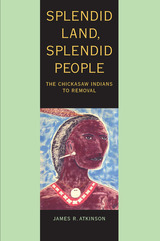 Splendid Land, Splendid People: The Chickasaw Indians to Removal
James R. Atkinson
University of Alabama Press, 2003 A thorough examination of the Chickasaw Indians, tracing their history as far back as the documentation and archeological record will allow
Before the Chickasaws were removed to lands in Oklahoma in the 1800s, the heart of the Chickasaw Nation was located east of the Mississippi River in the upper watershed of the Tombigbee River in what is today northeastern Mississippi. Their lands had been called "splendid and fertile" by French governor Bienville at the time they were being coveted by early European settlers. The people were also termed “splendid” and described by documents of the 1700s as “tall, well made, and of an unparalleled courage. . . . The men have regular features, well-shaped and neatly dressed; they are fierce, and have a high opinion of themselves.”
The progenitors of the sociopolitical entity termed by European chroniclers progressively as Chicasa, Chicaca, Chicacha, Chicasaws, and finally Chickasaw may have migrated from west of the Mississippi River in prehistoric times. Or migrating people may have joined indigenous populations. Despite this longevity in their ancestral lands, the Chickasaw were the only one of the original "five civilized tribes" to leave no remnant community in the Southeast at the time of removal.
Atkinson thoroughly researches the Chickasaw Indians, tracing their history as far back as the documentation and archaeological record will allow. He historicizes from a Native viewpoint and outlines political events leading to removal, while addressing important issues such as slave-holding among Chickasaws, involvement of Chickasaw and neighboring Indian tribes in the American Revolution, and the lives of Chickasaw women.
Splendid Land, Splendid People will become a fundamental resource for current information and further research on the Chickasaw. A wide audience of librarians, anthropologists, historians, and general readers have long awaited publication of this important volume.
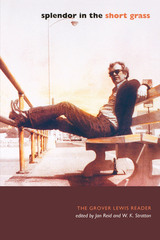 Splendor in the Short Grass: The Grover Lewis Reader
By Grover Lewis
University of Texas Press, 2005 Honorable Mention, Carr P. Collins Award for Best Book of Nonfiction, 2006 Grover Lewis was one of the defining voices of the New Journalism of the 1960s and 1970s. His wry, acutely observed, fluently written essays for Rolling Stone and the Village Voice set a standard for other writers of the time, including Hunter S. Thompson, Joe Eszterhas, Timothy Ferris, Chet Flippo, and Tim Cahill, who said of Lewis, "He was the best of us." Pioneering the "on location" reportage that has become a fixture of features about moviemaking and live music, Lewis cut through the celebrity hype and captured the real spirit of the counterculture, including its artificiality and surprising banality. Even today, his articles on Woody Guthrie, the Allman Brothers, the Rolling Stones concert at Altamont, directors Sam Peckinpah and John Huston, and the filming of The Last Picture Show and One Flew over the Cuckoo's Nest remain some of the finest writing ever done on popular culture. To introduce Grover Lewis to a new generation of readers and collect his best work under one cover, this anthology contains articles he wrote for Rolling Stone, Village Voice, Playboy, Texas Monthly, and New West, as well as excerpts from his unfinished novel The Code of the West and his incomplete memoir Goodbye If You Call That Gone and poems from the volume I'll Be There in the Morning If I Live. Jan Reid and W. K. Stratton have selected and arranged the material around themes that preoccupied Lewis throughout his life—movies, music, and loss. The editors' biographical introduction, the foreword by Dave Hickey, and a remembrance by Robert Draper discuss how Lewis's early struggles to escape his working-class, anti-intellectual Texas roots for the world of ideas in books and movies made him a natural proponent of the counterculture that he chronicled so brilliantly. They also pay tribute to Lewis's groundbreaking talent as a stylist, whose unique voice deserves to be more widely known by today's readers.
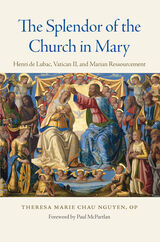 The Splendor of the Church in Mary: Henri de Lubac, Vatican II, and Marian Ressourcement
Theresa Marie Chau Nguyen
Catholic University of America Press, 2023 Henri de Lubac, SJ, (1896-1991) is one of the most renowned theologians of the twentieth century. Numerous studies have been undertaken to examine his many contributions to theology, but little attention has been paid to the specific topic of the relationship of the Blessed Virgin Mary and the Church in his writings. This was a topic that gave rise to contentious discussion at the Second Vatican Council, and although the Council fathers approved the integration of Marian doctrine into the Dogmatic Constitution on the Church, this synthesis of Mariology and ecclesiology has been largely neglected in theology today.
The Splendor of the Church in Mary retrieves de Lubac’s Marian ecclesiology and revives an understanding and appreciation of its enduring influence at the Vatican Council and beyond. The first part examines de Lubac’s pre-conciliar works which evince a steady biblical and patristic ressourcement of Marian themes. It also explores his writings on Teilhard de Chardin’s Eternal Feminine, Christian mysticism, and Amida Buddhism and discovers in them the essential building blocks of his Marian thought. The second part turns to the Second Vatican Council and post-conciliar developments. Rereading the debates and texts of Lumen Gentium through a Marian lens brings to light the extent of de Lubac’s influence: Méditation sur l’Eglise (1953), his principal work on Mary and the Church, anticipated the structure and content of Lumen Gentium a decade before the Council.
De Lubac’s writings provided a theological compass for the Council fathers, and they continue to provide direction and orientation for ecclesiological discourse today. The Splendor of the Church in Mary culminates in a constructive analysis of one of the most pressing pastoral and ecclesiological questions of our times: the question of the relationship of the universal and particular churches. Directly engaging the crucial debate between then-Cardinal Ratzinger and Cardinal Kasper, it proposes that de Lubac’s Mariology effectively offers a new perspective and a refreshing path forward. Attentive to the mystical identification of Mary and the Church, de Lubac’s ressourcement has the potential to re-enchant and advance contemporary theology in new and significant ways.
 The Splintered Party: National Liberalism in Hessen and the Reich, 1867–1918
Dan S. White
Harvard University Press, 1976 As a study of the greatest middle class party of Imperial Germany, The Splintered Party is inevitably, in its broadest aspect, an inquiry into the weaknesses of liberalism in the Empire of Bismarck and Wilhelm II. How did the National Liberals, the dominant force in the Reichstag of the 1870s, become by 1914 a spent and divided power? Dan White explores this question from a new perspective, emphasizing regional circumstances as primary agents of the party’s decline. The resulting portrait underscores the paradox of the National Liberals: a party with strength in all areas of the Empire, a rarity before 1914, yet a party whose impact was undermined by divisions among its regional branches.
In The Splintered Party the former Grand Duchy of Hessen serves as a testing ground where the regional foundations of National Liberalism can be exposed. As Professor White points out, the party’s reversals on the Imperial plane after 1878—rejection by Bismarck, electoral defeats, internal splits—not only ended its early primacy in German affairs but also shifted political initiative from Berlin and the Reichstag delegation to the National Liberal branches in the states and provinces, which had maintained unity, power, and alliances with local government in spite of the upheaval above them. The consequences of this change become visible through close examination of the political and social structure in Hessen. On the regional level a liberalism based on the claim to majority representation by the notables (Honoratioren) of bourgeois society, a creed no longer plausible in national politics, remained defensible. Through the Heidelberg Declaration of 1884 the National Liberals of the German Southwest attempted to buttress this approach with an economic and social platform and, simultaneously, to make it the impulse of the national party’s revival. But they succeeded only in deferring National Liberalism’s adjustment to democratic politics and in subordinating their movement to the clash of regional and constituency interests. The result was a chronically splintered party.
Against the backdrop of this main theme, White delineates several additional features of the changing political and social scene in Imperial Germany—the local power of the notables, Bismarck’s skills as a political manager, the character of agrarian discontent and rural anti-Semitism, the steady advance of socialism. The uniquely German element in National Liberalism’s failure is assessed in a concluding comparison with the development of liberal politics in Britain and Italy.
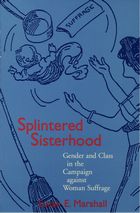 Splintered Sisterhood: Gender and Class in the Campaign against Woman Suffrage
Susan E. Marshall
University of Wisconsin Press, 1997 When Tennessee became the thirty-sixth and final state needed to ratify the Nineteenth Amendment in August 1920, giving women the right to vote, one group of women expressed bitter disappointment and vowed to fight against “this feminist disease.” Why this fierce and extended opposition? In Splintered Sisterhood, Susan Marshall argues that the women of the antisuffrage movement mobilized not as threatened homemakers but as influential political strategists.
Drawing on surviving records of major antisuffrage organizations, Marshall makes clear that antisuffrage women organized to protect gendered class interests. She shows that many of the most vocal antisuffragists were wealthy, educated women who exercised considerable political influence through their personal ties to men in politics as well as by their own positions as leaders of social service committees. Under the guise of defending an ideal of “true womanhood,” these powerful women sought to keep the vote from lower-class women, fearing it would result in an increase in the “ignorant vote” and in their own displacement from positions of influence. This book reveals the increasingly militant style of antisuffrage protest as the conflict over female voting rights escalated. Splintered Sisterhood adds a missing piece to the history of women’s rights activism in the United States and illuminates current issues of antifeminism.
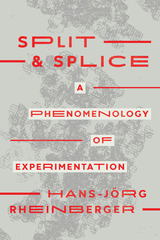 Split and Splice: A Phenomenology of Experimentation
Hans-Jörg Rheinberger
University of Chicago Press, 2023 An esteemed historian of science explores the diversity of scientific experimentation.
The experiment has long been seen as a test bed for theory, but in Split and Splice, Hans-Jörg Rheinberger makes the case, instead, for treating experimentation as a creative practice. His latest book provides an innovative look at the experimental protocols and connections that have made the life sciences so productive.
Delving into the materiality of the experiment, the first part of the book assesses traces, models, grafting, and note-taking—the conditions that give experiments structure and make discovery possible. The second section widens its focus from micro-level laboratory processes to the temporal, spatial, and narrative links between experimental systems. Rheinberger narrates with accessible examples, most of which are drawn from molecular biology, including from the author’s laboratory notebooks from his years researching ribosomes.
A critical hit when it was released in Germany, Split and Splice describes a method that involves irregular results and hit-or-miss connections—not analysis, not synthesis, but the splitting and splicing that form a scientific experiment. Building on Rheinberger’s earlier writing about science and epistemology, this book is a major achievement by one of today’s most influential theorists of scientific practice.
Split: Class Divides Uncovered
Ben Tippet
Pluto Press, 2020 In 1990, John Major hailed 'the classless society'; in 1997, New Labour announced that 'we're all middle class now', yet we live in an age where food banks, pay day lenders and zero-hour contracts proliferate: it's clear that class matters.
Foregrounding the economic nature of class, Split challenges the idea that class can be reduced to the cultural. From precarious labor to rising debt; from the housing crisis to environmental catastrophe; from an inflated prison population to the welfare state; Ben Tippet traces the class divide at the heart of all exploitation. Myth-busting meritocracy, he exposes the role that tax havens, colonialism and inheritance play in the wealth of the elite.
Split highlights the potential for a diverse and eclectic working-class bloc to fight back in an age of austerity and uncertainty.
Split Federated Learning for Secure IoT Applications: Concepts, frameworks, applications and case studies
Gururaj Harinahalli Lokesh
The Institution of Engineering and Technology, 2024 New approaches in federated learning and split learning have the potential to significantly improve ubiquitous intelligence in internet of things (IoT) applications. In split federated learning, the machine learning model is divided into smaller network segments, with each segment trained independently on a server using distributed local client data.
The Split World of Gerard Manley Hopkins
Dennis Sobolev
Catholic University of America Press, 2011 For the first time in almost half a century, the world of Hopkins is examined as an indivisible whole. The Split World of Gerard Manley Hopkins is a synthetic study of Hopkins's writings, written within a framework of semiotic phenomenology.
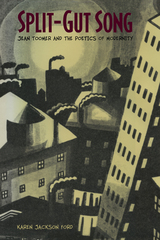 Split-Gut Song: Jean Toomer and the Poetics of Modernity
Karen Jackson Ford
University of Alabama Press, 2005 A deft study of the evolving literary aesthetic of one of the first avant-garde black writers in America. In Split-Gut Song, Karen Jackson Ford looks at what it means to be African American, free, and creative by analyzing Jean Toomer's main body of work, specifically, his groundbreaking creation Cane. When first published in 1923, this pivotal work of modernism was widely hailed as inaugurating a truly artistic African American literary tradition. Yet Toomer's experiments in literary form are consistently read in terms of political radicalism—protest and uplift—rather than literary radicalism. Ford contextualizes Toomer's poetry, letters, and essays in the literary culture of his period and, through close readings of the poems, shows how they negotiate formal experimentation (imagism, fragmentation, dialect) and traditional African American forms (slave songs, field hollers, call-and-response sermons, lyric poetry). At the heart of Toomer's work is the paradox that poetry is both the saving grace of African American culture and that poetry cannot survive modernity. This contradiction, Ford argues, structures Cane, wherein traditional lyric poetry first flourishes, then falters, then falls silent. The Toomer that Ford discovers in Split-Gut Song is a complicated, contradictory poet who brings his vexed experience and ideas of racial identity to both conventional lyric and experimental forms. Although Toomer has been labelled a political radical, Ford argues that politics is peripheral in his experimental, stream-of-consciousness work. Rather Toomer exhibits a literary radicalism as he struggles to articulate his perplexed understanding of race and art in 20th-century America.
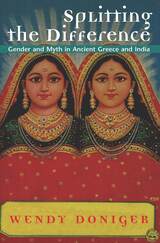 Splitting the Difference: Gender and Myth in Ancient Greece and India
Wendy Doniger
University of Chicago Press, 1999 Hindu and Greek mythologies teem with stories of women and men who are doubled, who double themselves, who are seduced by gods doubling as mortals, whose bodies are split or divided. In Splitting the Difference, the renowned scholar of mythology Wendy Doniger recounts and compares a vast range of these tales from ancient Greece and India, with occasional recourse to more recent "double features" from Dr. Jekyll and Mr. Hyde to Face/Off.
Myth, Doniger argues, responds to the complexities of the human condition by multiplying or splitting its characters into unequal parts, and these sloughed and cloven selves animate mythology's prodigious plots of sexuality and mortality. Doniger's comparisons show that ultimately differences in gender are more significant than differences in culture; Greek and Indian stories of doubled women resemble each other more than they do tales of doubled men in the same culture. In casting Hindu and Greek mythologies as shadows of each other, Doniger shows that culture is sometimes but the shadow of gender.
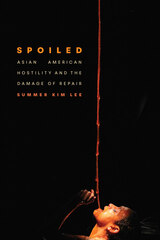 Spoiled: Asian American Hostility and the Damage of Repair
Summer Kim Lee
Duke University Press, 2025 In Spoiled, Summer Kim Lee examines how contemporary Asian American artists challenge expectations that their work should repair the wounds of racial trauma. Kim Lee turns to the “spoiled”—the racialized, gendered body and all that it consumes, wrecks, and inflicts in its desire and excess—in visual culture, performance, music, and literature. Reading works by Cato Ouyang, Patty Chang, Wu Tsang, TJ Shin, Jes Fan, and others, Kim Lee highlights moments of hostility and deformation that spoil idealizations of Asian Americanness and incite modes of feeling and relating that relinquish fantasies of wholeness, power, and control. She observes the latent aggressive behaviors and negative affects in Asian American aesthetic practice: the embarrassment of asociality, the imposition of speaking as someone else, and the indulgence of ravenous appetites. In so doing, Kim Lee questions the political desires for repair expressed in “feeling Asian” and stays with the damage that spoilage creates as integral to the kinds of repair that Asian Americans seek.
Spoiler Alert: A Critical Guide
Aaron Jaffe
University of Minnesota Press, 2019 All of this information at our fingertips—and we might not need any of it Concurrent with the compulsory connectivity of the digital age is the rise of the spoiler. The inevitability of information has changed the critical quality of modernity, leaving us with acute vertigo—a feeling that nothing new is left out there. Encompassing memes and trigger warnings, Vilem Flusser and Thomas Pynchon, Spoiler Alert wrangles with the state of surprise in post-historical times. Aaron Jaffe delivers a timely corrective to post-critical modes of reading that demonstrates the dangers of forfeiting critical suspicion.
Forerunners: Ideas First
Short books of thought-in-process scholarship, where intense analysis, questioning, and speculation take the lead
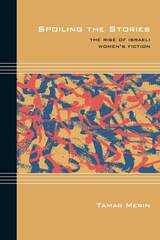 Spoiling the Stories: The Rise of Israeli Women's Fiction
Tamar Merin
Northwestern University Press, 2016 In Spoiling the Stories, Tamar Merin presents the as yet untold story of the rise of prose by Israeli women, while further exploring and expanding the gendered models of literary influence in modern Hebrew literature. The theoretical idea upon which this book is based is that of intersexual dialogue, a term that refers to the various literary strategies employed by Israeli female fiction writers expressing their voice within a male-dominated and (still) inherently Oedipal literary tradition. Spoiling the Stories focuses on intersexual dialogue as it evolved in the first three decades after the establishment of the state of Israel in the works of Yehudit Hendel, Amalia Kahana Carmon, and Rachel Eytan. According to Merin, these three women writers were the most important in the history of modern Hebrew literature: each was a significant participant in the poetic development of her time.
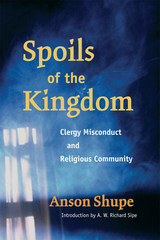 Spoils of the Kingdom: Clergy Misconduct and Religious Community
Anson Shupe
University of Illinois Press, 2006 In Spoils of the Kingdom, Anson Shupe investigates clergy misconduct as it has recently unfolded across five faith-based groups. Looking at episodes of abuse in the Roman Catholic, Mormon, African American Protestant, white Evangelical Protestant, and First Nations communities, Spoils of the Kingdom tackles hard questions not only about the sexual abuse of women and children, but also about economic frauds perpetrated by church leaders (including embezzlement, mis-represented missions, and outright theft) as well as cases of excessively authoritarian control of members’ health, lifestyles, employment, and politics.
Drawing on case evidence, Shupe employs classical and modern social exchange theories to explain the institutional dynamics of clergy misconduct. He argues that there is an implicit contract of reciprocity and compliance between congregants and religious leaders that, when amplified by the charismatic awe often associated with religious authorities, can lead to misconduct.
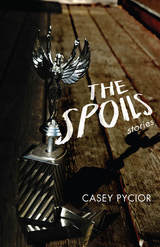 The Spoils: Stories
Casey Pycior
Northern Illinois University Press, 2017 Deep in the landlocked heart of the Midwest, the characters in The Spoils are drowning under the weight of masculinity, paralyzed in the grip of things left unsaid. These men are broken and breaking, struggling to reckon with the decisions they’ve made and those they have yet to face. Set mostly in and around Kansas, the stories in this powerful collection explore how men perform, in their jobs and personal lives, and investigate the gray area between doing what’s best for oneself and acting a part to make others happy.
A man questions whether he should leave his drug-addicted girlfriend and her son or stay, sacrificing his own well-being to be the boy’s father. Fed up with the role of the stooge, a Washington Generals player takes his A-game to the Harlem Globetrotters and has to face the unforeseen consequences. A rookie prison guard sent to procure a death row inmate’s final meal commits a small, subversive act of humanity.
In a world where the line between right and wrong is constantly shifting, some struggle to do the right thing, while others eschew the line altogether and deal with the sometimes violent repercussions. The Spoils examines these difficult choices and will appeal to readers of literary fiction and short stories, especially readers of fiction based in the Midwest.
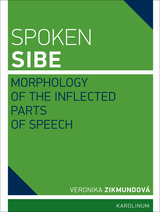 Spoken Sibe: Morphology of the Inflected Parts of Speech
Veronika Zikmundová
Karolinum Press, 2013 At present, the Sibe language is the only still-active oral variety of Manchu, the language of the indigenous tribe of Manchuria. With some 20,000 to 30,000 speakers it is also the most widely spoken of the Tungusic languages, which are found in both Manchuria and eastern Siberia. The Sibe people, who live at the northwestern border of the present-day Sinkiang Uyghur Autonomous province of China, are descendants of the garrison men of the Manchu army from the eighteenth century. After annexing the area, the Manchus sent the Sibe’s predecessors there with the task of guarding the newly established border between the Manchu Empire and Russia. They remained isolated from the indigenous Turkic and Mongolian peoples, which resulted in the preservation of the language. In the 1990s, when the oral varieties of Manchu became either extinct or on the verge of extinction, Sibe survived as a language spoken by all generations of Sibe people in the Chapchal Sibe autonomous county, and by the middle and older generations in virtually all other Sibe settlements of Xinjiang. Spoken Sibe is a carefully researched study of this historically and linguistically important language.
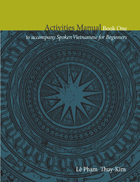 Spoken Vietnamese Activities Manual 1
Le Pham Thuy-Kim
Northern Illinois University Press, 1994
The activities manuals for Spoken Vietnamese for Beginners are designed to supplement
each of the textbook’s twenty lessons. They consist of preliminary chapters introducing
useful classroom expressions and additional chapters that are divided into
four sections: writing activities, listening activities, oral activities, and pattern drills.
The writing activities sections provide exercises to help students practice new
vocabulary and grammar points and develop reading and writing skills. The listening
activities sections contain questions and activities based on the dialogues,
monologues, and narratives featured in the Spoken Vietnamese audio program. The
oral activities sections start with controlled exercises, continue further with guided
exercises, and then end with role playing exercises so students can integrate and recombine
material previously studied with new materials learned. The pattern drills
sections include exercises in substitution, transformation, and response. These
activities manuals and the accompanying audio program that will be made available
online can be used either with a teacher or for self-study. Professors, their pupils, or
anyone learning Vietnamese on their own will appreciate their instructional value.
The instructor’s manual for Spoken Vietnamese for Beginners proposes general
classroom procedures and advises professors and teachers alike how to use the textbook
effectively in conjunction with its two activities manuals. It includes advice
on how to introduce new vocabulary and dialogues; how to introduce new patterns
or new grammatical structures; how to work with students on oral practices; how
to work with them on their writing activities; and how to work with them on their
listening activities. The keen wisdom and helpful guidance in the instructor’s
manual will be welcomed by professors and teachers that use Spoken Vietnamese for
Beginners and its two supplemental activities manuals in the classroom.
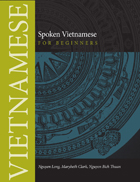 Spoken Vietnamese for Beginners
Nguyen Long
Northern Illinois University Press, 2011
This textbook is designed for English-speaking students wishing to acquire a basic working ability in conversational Vietnamese. The twenty lessons in this volume are centered around short conversations based on common topics—introductions, friends and family members, work—as well as other everyday situations. Each set of conversations builds on previously studied material and introduces new sentence structures.
Spoken Vietnamese for Beginners also contains exercise sections that allow students to practice new and old vocabulary. Every fifth lesson in the book reviews previously covered material with written exercises, narrative readings, and suggested conversations so students can practice the Vietnamese they have learned. Self-tests are also included so students can individually review their understanding of the language.
The conversations and exercises in this textbook will be made available online as audio files. The book and accompanying audio—an integral component to Spoken Vietnamese for Beginners—can be used either with a teacher or for self-study. Language professors and their students—or those learning Vietnamese on their own—will appreciate the accessible approach and manageable size of this very practical textbook.
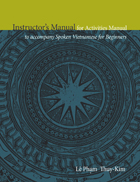 Spoken Vietnamese Instructor's Manual for Activities Manual
Le Pham Thuy-Kim
Northern Illinois University Press, 2011
The activities manuals for Spoken Vietnamese for Beginners are designed to supplement
each of the textbook’s twenty lessons. They consist of preliminary chapters introducing
useful classroom expressions and additional chapters that are divided into
four sections: writing activities, listening activities, oral activities, and pattern drills.
The writing activities sections provide exercises to help students practice new
vocabulary and grammar points and develop reading and writing skills. The listening
activities sections contain questions and activities based on the dialogues,
monologues, and narratives featured in the Spoken Vietnamese audio program. The
oral activities sections start with controlled exercises, continue further with guided
exercises, and then end with role playing exercises so students can integrate and recombine
material previously studied with new materials learned. The pattern drills
sections include exercises in substitution, transformation, and response. These
activities manuals and the accompanying audio program that will be made available
online can be used either with a teacher or for self-study. Professors, their pupils, or
anyone learning Vietnamese on their own will appreciate their instructional value.
The instructor’s manual for Spoken Vietnamese for Beginners proposes general
classroom procedures and advises professors and teachers alike how to use the textbook
effectively in conjunction with its two activities manuals. It includes advice
on how to introduce new vocabulary and dialogues; how to introduce new patterns
or new grammatical structures; how to work with students on oral practices; how
to work with them on their writing activities; and how to work with them on their
listening activities. The keen wisdom and helpful guidance in the instructor’s
manual will be welcomed by professors and teachers that use Spoken Vietnamese for
Beginners and its two supplemental activities manuals in the classroom.
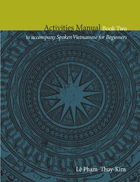 Spoken Vietnamese Manual Book 2
Le Pham Thuy-Kim
Northern Illinois University Press, 1994
The activities manuals for Spoken Vietnamese for Beginners are designed to supplement
each of the textbook’s twenty lessons. They consist of preliminary chapters introducing
useful classroom expressions and additional chapters that are divided into
four sections: writing activities, listening activities, oral activities, and pattern drills.
The writing activities sections provide exercises to help students practice new
vocabulary and grammar points and develop reading and writing skills. The listening
activities sections contain questions and activities based on the dialogues,
monologues, and narratives featured in the Spoken Vietnamese audio program. The
oral activities sections start with controlled exercises, continue further with guided
exercises, and then end with role playing exercises so students can integrate and recombine
material previously studied with new materials learned. The pattern drills
sections include exercises in substitution, transformation, and response. These
activities manuals and the accompanying audio program that will be made available
online can be used either with a teacher or for self-study. Professors, their pupils, or
anyone learning Vietnamese on their own will appreciate their instructional value.
The instructor’s manual for Spoken Vietnamese for Beginners proposes general
classroom procedures and advises professors and teachers alike how to use the textbook
effectively in conjunction with its two activities manuals. It includes advice
on how to introduce new vocabulary and dialogues; how to introduce new patterns
or new grammatical structures; how to work with students on oral practices; how
to work with them on their writing activities; and how to work with them on their
listening activities. The keen wisdom and helpful guidance in the instructor’s
manual will be welcomed by professors and teachers that use Spoken Vietnamese for
Beginners and its two supplemental activities manuals in the classroom.
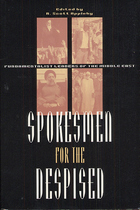 Spokesmen for the Despised: Fundamentalist Leaders of the Middle East
Edited by R. Scott Appleby
University of Chicago Press, 1997 Behind the bloody acts of terrorism, the mobs chanting with upraised fists, the backroom and front-page politics in the Middle East, stand powerful religious leaders cloaked in mystery and fanaticism. Spokesmen for the Despised lifts the veils, presenting eight vivid portraits of fundamentalist leaders who have turned their charismatic religious authority to powerful political ends.
The deeds of the men profiled in this book make history and headlines, whether through the anti-American rhetoric of the late Iranian revolutionary, Ayatollah Ruhollah Khomeini; the violent acts of Hizbullah, the Lebanese Shi'ite movement headed by Sayyid Muhammad Husayn Fadlallah; or the group of Jewish rabbis who appear to have inspired the assassination of Israeli Prime Minister Yitzhak Rabin. No one better exemplifies this history-making than Shaykh Ahmad Yasin, the spiritual leader of Hamas, who from his Israeli jail cell continues to influence Hamas's efforts to eliminate both Israel and the PLO. Also featured are the spiritual guides of the radical Jewish settler movement Gush Emunim, the Sudanese sponsor of "the Islamic Awakening," the preacher who inflamed Upper Egypt, and the ideological leader of the Zionist International Christian Embassy.
These riveting biographies include interviews with true believers and bitter opponents, and in several cases with the subjects themselves, carefully placing the lives of these charismatic leaders in the contexts of their religious traditions and their varied social, political, and religious settings. Spokesmen for the Despised is an essential volume for anyone wishing to understand the relationship between religion and politics in the Middle East.
Contributors: Ziad Abu Amr, Gideon Aran, Yaakov Ariel, Daniel Brumberg, Patrick D. Gaffney, Samuel Heilman, Martin Kramer, and Judith Miller
 Sponsored Identities: Cultural Politics in Puerto Rico
Arlene Davila
Temple University Press, 1997 "Now everybody loves Puerto Rican culture," says a Puerto Rican schoolteacher and festival organizer, "but that's exactly the problem." Thus begins this major examination of cultural nationalism as a political construct involving party ideologies, corporate economic goals, and grassroots cultural groups.
Author Arlene Davila focuses on the Institute for Puerto Rican Culture, the government institution charged with defining authenticated views of national identity since the 1950s, and on popular festival organizers to illuminate contestations over appropriate representations of culture in the increasingly mass-mediated context of contemporary Puerto Rico. She examines the creation of an essentialist view of nationhood based on a peasant culture and a "unifying" Hispanic heritage, and the ways in which grassroots organizations challenge and reconfigure definitions of national identity through their own activities and representations.
Davila pays particular attention to the increasing prominence of corporate sponsorship in determining what is distinguished as authentic "Puerto Rican culture" and discusses the politicization of culture as a discourse to debate and legitimize conflicting claims from selling commercial product to advocating divergent status options for the island. In so doing, Davila illuminates the prospects for cultural identities in an increasingly transnational context by showing the growth of cultural nationalism to be intrinsically connected to forms of political action directed to the realm of culture and cultural politics. This in-depth examination also makes clear that despite contemporary concerns with "authenticity," commercialism is an inescapable aspect of all cultural expression on the island.
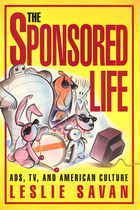 The Sponsored Life: Ads, TV, and American Culture
Leslie Savan
Temple University Press, 1994
How does a blatant lying in TV commercials—like Joe Isuzu's manic claims—create public trust in a product or a company? How does a company associated with a disaster, Exxon or Du Pont for example, restore its reputation? What is the real story behind the rendering of the now infamous Joe Camel? And what is the deeper meaning of living in an ad, ad, ad world? For a decade, journalist Leslie Savan has been exposing the techniques used by advertisers to push products and pump up corporate images. In the lively essays in this collection, Savan penetrates beneath the slick surfaces of specific ads and marketing campaigns to show how they reflect and shape consumer desires.
Savan's interviews with ad agencies and corporate clients—along with her insightful analyses of influential TV sports—reveal how successful advertising works. Ads do more than command attention. They are signposts to the political, cultural, and social trends that infiltrate the individual consumer's psyche. Think of the products associated with corporate mascots—the drum-beating bunny, the cereal-pushing tiger, the doughboy—that have become pop culture icons. Think cool. Think of the clothing manufacturer that uses multiracial imagery. Think progressive. Buy their worldview, buy their product. When virtually every product can be associate with some positive self-image, we are subtly refashioned into the advertiser's concept of a good citizen. Like it or not, we lead "the sponsored life."
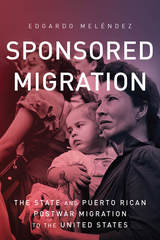 Sponsored Migration: The State and Puerto Rican Postwar Migration to the United States
Edgardo Meléndez
Ohio State University Press, 2017 Puerto Rico is often left out of conversations on migration and transnationalism within the Latino context. Sponsored Migration: The State and Puerto Rican Postwar Migration to the United States by Edgardo Meléndez seeks to rectify this oversight, serving as a comprehensive study of the factors affecting Puerto Rican migration to the United States from the late 1940s to the 1960s. Examining the consequences of the perceived problem of Puerto Rican overpopulation as well as the cost of U.S. imperialism on the lives of Puerto Rican workers, Meléndez scrutinizes Puerto Rican migration in the postwar period as a microcosm of the political history of migration throughout Latin America.
Sponsored Migration places Puerto Rico’s migration policy in its historical context, examining the central role the Puerto Rican government played in encouraging and organizing migration during the postwar period. Meléndez sheds an important new light on the many ways in which the government intervened in the movement of its people: attempting to provide labor to U.S. agriculture, incorporating migrants into places like New York City, seeking to expand the island’s air transportation infrastructure, and even promoting migration in the public school system. One of the first scholars to explore this topic in depth, Meléndez illuminates how migration influenced U.S. and Puerto Rican relations from 1898 onward.
Spontaneous Shelter
Carl Patton
Temple University Press, 1988 Using cross-national political, economic, and environmental comparisons as well as case studies from all parts of the world, this volume focuses on the increasing problem of providing shelter in underdeveloped countries, the innovative solutions that have been applied to the problem, and the prospects for the future. Spontaneous Shelter examines the contemporary and emerging issues that face homeless people in the Third World and suggests policy actions that can be taken. Providing middle-class as well as poverty-level examples, and considering environmental issues, the contributors use case materials, photographs, and drawings to clarify the policy agenda for basic shelter provision.
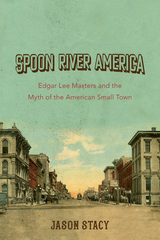 Spoon River America: Edgar Lee Masters and the Myth of the American Small Town
Jason Stacy
University of Illinois Press, 2021 From Main Street to Stranger Things, how poetry changed our idea of small town life A literary and cultural milestone, Spoon River Anthology captured an idea of the rural Midwest that became a bedrock myth of life in small-town America. Jason Stacy places the book within the atmosphere of its time and follows its progress as the poetry took root and thrived. Published by Edgar Lee Masters in 1915, Spoon River Anthology won praise from modernists while becoming an ongoing touchstone for American popular culture. Stacy charts the ways readers embraced, debated, and reshaped Masters's work in literary controversies and culture war skirmishes; in films and other media that over time saw the small town as idyllic then conflicted then surreal; and as the source of three archetypes—populist, elite, and exile—that endure across the landscape of American culture in the twenty-first century. A wide-ranging reconsideration of a literary landmark, Spoon River America tells the story of how a Midwesterner's poetry helped change a nation's conception of itself.
 Spoon River Anthology: An Annotated Edition
Edgar Lee Masters. Edited and with an Introduction and Annotations by John E. Hallwas
University of Illinois Press, 1992 What lies beneath the surface of Masters' timeless classic One of the most striking and original achievements in American poetry is now available in a remarkable edition that comprehends the poet and his book in an entirely new way. This edition of Spoon River Anthology probes the social background of the small-town world that Edgar Lee Masters loved and hated--and finally transmuted into powerful literary art. Extensive annotations identify the people whose lives inspired the 243 poetic accounts of frustration, violence, struggle, and triumph that shocked American readers. The most extraordinary feature of this edition is the extensive introduction that provides the key to this misunderstood American classic. The book's relationship to Whitman is clearly established, and the important influences of Browning, Goethe, Spinoza, and others are revealed for the first time. John Hallwas' approach combines cultural, biographical, philosophical, psychoanalytic, mythic, and symbolic insights--and concludes with a stunning reassessment of "Our New Poet." The annotated Spoon River Anthology supersedes seventy-five years of largely misdirected critical commentary. It will send a new generation of readers back to this surprisingly complex book that probes so deeply into the American consciousness.
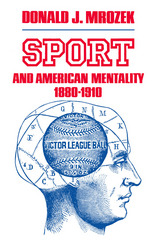 Sport & American Mentality, 1880-1910
Donald J. Mrozek
University of Tennessee Press, 1983 Few observers of American life today would doubt that sports occupy a prominent place in our society, but equally few have examined the origins of the country's greatest passion. Probing our history, culture, and consciousness, Donald J. Mrozek shows how sports gained national acceptance and became as standard as fried chicken and church on Sunday.
Today's boom has its roots in the period from 1880–1910. As Mrozek shows, famous and forgotten public figures and athletes helped shaped the modern craze. They included nutritionist Horace Fletcher, strongman Eugene Sandow, journalist Elizabeth Paine, and such familiar personalities as Teddy Roosevelt, Henry Cabot Lodge, and John Muir.
A national interest in sports could develop only after the governing classes had ceased to oppose organized games. Thereafter many forces worked on the public mind. National unification after the Civil War, changes in the role of women, and increases in leisure time all played a part. Other contributing trends were interest in an energetic lifestyle, the beginnings of a youth culture, and a generalized need for acceptable ways of expressing sexuality and sensuality. This wide-ranging study paints a lively and compelling portrait of the American people in quest of sport.
 Sport: A Philosophical Inquiry
Paul Weiss
Southern Illinois University Press
In a wide-ranging study of unusual interest, Paul Weiss, Sterling Professor of Philosophy at Yale University, applies the principles and methods of philosophy to athletics. Every culture, he notes, has games of some kind; few activities seem to interest both children and young men as much as sports do; and few attract so many spectators, rich and poor. Yet none of the great philosophers, claiming to take all knowledge and being as their province, have made more than a passing reference to sport, in part, Professor Weiss suggests, because they thought that what pleased the vulgar was not worth sustained study by the leisured.
This seminal book breaks new ground and explores new paths: psychological and sociological forms of human behavior exhibited in games; the physiology of athletics, and the efforts of training and conditioning; and the motivation of athletics— the rhythm and aims of contests and games, and the meaning of team play. More importantly, however, Professor Weiss’ s unique contributions lie in his discussions of the distinct contributions that sport makes to civilization.
Professor Weiss discusses at length such topics as the Olympic Games and men and women as amateur and professional athletes— and their sacrifices, defeats, and humiliations. And he delineates the stages the athlete must go through in his progress toward self-completion.
Sport and Christianity: A Sign of the Times in the Light of Faith
Kevin Lixey
Catholic University of America Press, 2012 Sport and Christianity explores the connections between these two seemingly disparate phenomena. It reflects on what the fascination for sport reveals about the human person and to what degree sporting activities are compatible with, and can even advance, the church's mission.
Sport and Exercise Science: ESSAYS IN THE HISTORY OF SPORTS MEDICINE
Edited by Jack W. Berryman and Roberta J. Parks
University of Illinois Press, 1992 Topics are as far-ranging and current as the use of steroids, training for competition,
athlete's heart, exercise physiology, physical activity and sport for females, women's
health, physical culture and quackery, diet, and more.
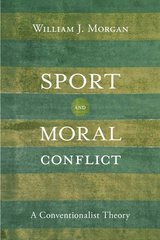 Sport and Moral Conflict: A Conventionalist Theory
William J.Morgan
Temple University Press, 2020 What is the purpose of sport, and how are ethical conceptions of sport shaped by the answers to this question? In Sport and Moral Conflict, William Morgan investigates, examining sport as a moral crucible that puts athletes in competitive, emotionally charged situations where fairness and equality are contested alongside accomplishment. Morgan looks at the modern Olympics—from 1906 Athens to 1924 Paris, when the Games reached international prestige — in order to highlight the debate about athletic excellence and the amateur-professional divide. Whereas the Americans emphasized winning, the Europeans valued a love of the game. Morgan argues that the existing moral theories of sport—formalism and broad internalism (aka interpretivism), which rely on rules and general principles—fall short when confronted with such a dispute as the transition from amateur to professional sport. As such, he develops a theory of conventionalism, in which the norms at work in athletic communities determine how players should ethically acquit themselves. Presenting his case for an ethical theory of sport, Morgan provides insights regarding the moral controversies and crises that persist today.
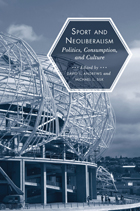 Sport and Neoliberalism: Politics, Consumption, and Culture
David L. Andrews
Temple University Press, 2012 Offering new approaches to thinking about sports and political ideologies, Sport and Neoliberalism explores the structures, formations, and mechanics of neoliberalism. The editors and contributors to this original and timely volume examine the intersection of sport as a national pastime and also an engine for urban policy—e.g., stadium building—as well as a powerful force for influencing our understanding of the relationship between culture, politics, and identity. Sport and Neoliberalism examines the ways the neoliberal project creates priorities for civic society and how, in effect, it turns many aspects of sport into a vehicle of public governance. From the relationship between sport and the neo-liberal state, through the environmental dimensions of neo-liberal sport, to the political biopolitics of obesity, the essays in this volume explore the ways in which the “logics” of neoliberalism are manifest as powerful public pedagogies through the realm of popular culture. Contributors include: Michael Atkinson, Ted Butryn, C. L. Cole, Norman Denzin, Grant Farred, Jessica Francombe, Caroline Fusco, Michael D. Giardina, Mick Green, Leslie Heywood, Samantha King, Lisa McDermott, Mary G. McDonald, Toby Miller, Mark Montgomery, Joshua I. Newman, Jay Scherer, Kimberly S. Schimmel, and Brian Wilson In the series Sporting, edited by Amy Bass
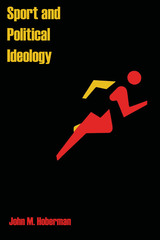 Sport and Political Ideology
By John M. Hoberman
University of Texas Press, 1984 Across the modern political spectrum, left-wing and right-wing political theorists have invested sport with ideological significance. That significance, however, varies distinctively and characteristically with the ideology—a phenomenon John Hoberman terms "ideological differentiation." Taking this phenomenon as its point of departure, this provocative work interprets the major sport ideologies of the twentieth century as distinct expressions of political doctrine. Hoberman argues that a political ideology's interpretation of sport is shaped in part by the value it assigns to work and play as modes of experience; the political anthropologies of right and left can be distinguished by examining their resistance to—or affinity for—sportive imagery of their leaders and of the state itself; there exists a fascist temperament that shows an affinity to athleticism and the sphere of the body that is not shared by the left. Tracing modern sport ideology back to its premodern antecedents, Hoberman examines the interpretations of sport that have been promulgated by European political intellectuals, such as cultural conservatives and contemporary neo-Marxists, and by the official ideologists of Nazi Germany, the Soviet Union, the German Democratic Republic, and China before and after Mao. As a form of mass theater, sport can advertise any ideology. But the deeper relationship between sport and political ideology has never before been explored wth such vigor. Presenting the first general theory of sport and political ideology to appear in any language, Hoberman's groundbreaking work is a unique and invaluable contribution to the intellectual and political history of sport in the twentieth century.
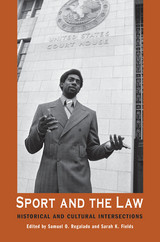 Sport and the Law: Historical and Cultural Intersections
Samuel O. Regalado
University of Arkansas Press, 2014 This new collection examines not only how athletes looked to the nation’s judicial system to solve conflicts but also how their cases trans¬formed the interpretation of laws. These essays examine a vast array of social and legal controversies including Heywood v. NBA (1971), which allowed any player to enter the draft; Flood v. Kuhn (1972), which considered baseball’s antitrust status; the Danny Gardella lower level 1948 case regarding free agency and baseball; Muhammad Ali’s celebrated stance against the U.S. draft; Renée Richards’s 1976 lawsuit against the U.S. Tennis Association and its due process ramifications; and human rights violations in international law with respect to the increased recruitment of underage Latin baseball players in the Caribbean region are a few examples of the vast array of stories included. Sport and the Law links these cases to other cases and topics, giving the reader the opportunity to see the threads weaving law and sport together in American society.
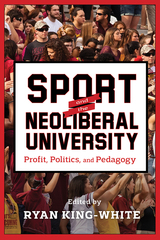 Sport and the Neoliberal University: Profit, Politics, and Pedagogy
King-White, Ryan
Rutgers University Press, 2018 College students are now regarded as consumers, not students, and nowhere is the growth and exploitation of the university more obvious than in the realm of college sports, where the evidence is in the stadiums built with corporate money, and the crowded sporting events sponsored by large conglomerates.
The contributors to Sport and the Neoliberal University examine how intercollegiate athletics became a contested terrain of public/private interests. They look at college sports from economic, social, legal, and cultural perspectives to cut through popular mythologies regarding intercollegiate athletics and to advocate for increased clarity about what is going on at a variety of campuses with regard to athletics. Focusing on current issues, including the NCAA, Title IX, recruitment of high school athletes, and the Penn State scandal, among others, Sport and the Neoliberal University shows the different ways institutions, individuals, and corporations are interacting with university athletics in ways that are profoundly shaped by neoliberal ideologies.
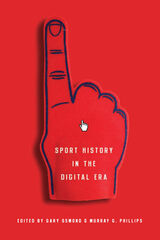 Sport History in the Digital Era
Edited by Gary Osmond and Murray G. Phillips
University of Illinois Press, 2015 From statistical databases to story archives, from fan sites to the real-time reactions of Twitter-empowered athletes, the digital communication revolution has changed the way sports fans relate to their favorite teams. In this volume, contributors from Australia, Ireland, New Zealand, the United Kingdom, and the United States analyze the parallel transformation in the field of sport history, showing the ways powerful digital tools raise vital philosophical, epistemological, ontological, methodological, and ethical questions for scholars and students alike. Chapters consider how the philosophical and theoretical understanding of the meaning of history influence a willingness to engage with digital history, and conceptualize the relationship between history making and the digital era. As the writers show, digital media's mostly untapped potential for studying the recent past via blogs, chat rooms, gambling sites, and the like forge a symbiosis between sports and the internet, and offer historians new vistas to explore and utilize. Sport History in the Digital Era also shows how the best digital history goes beyond a static cache of curated documents. Instead, it becomes a truly public history that serves as a dynamic site of enquiry and discussion. In such places, scholars enter into a give-and-take with individuals while inviting the audience to grapple with, rather than passively absorb, the evidence being offered. Timely and provocative, Sport History in the Digital Era affirms how the information revolution has transformed sport and sport history--and shows the road ahead. Contributors include Douglas Booth, Mike Cronin, Martin Johnes, Matthew Klugman, Geoffery Z. Kohe, Tara Magdalinski, Fiona McLachlan, Bob Nicholson, Rebecca Olive, Gary Osmond, Murray G. Phillips, Stephen Robertson, Synthia Sydnor, Holly Thorpe, and Wayne Wilson.
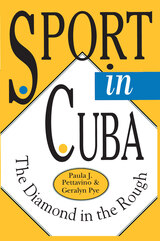 Sport in Cuba: The Diamond in the Rough
Paula J. Pettavino
University of Pittsburgh Press, 1994 No aspect of Cuban life more clearly epitomizes their government's emphasis on image-building and individual participation than the system of physical culture and competitive athletics. Indeed the Cuban record in international athletics is the most universally recognized success of the communist revolution, as indicated by the Cuban arrival in the 1972 Olympics and the 1991 Pan-American Games, when Cuba beat the United States in the gold medal tally, dominating boxing, baseball, and winning the marathon. The fruits of the Cuban sports system were again in evidence at the Barcelona Olympics of 1992, despite the severe deprivation caused by the collapse of the island's socialist allies.
In spite of the obvious success and political importance of sport in Cuba, very little has been written on the subject. Sport in Cuba closes this gap. In the first major study on the Cuban system of sports and physical culture, Paula J. Pettvino and Geralyn Pye analyze how sports was given such a high priority in Cuba, how the country became a world power by the mid-1970s, and the impact of sports on Cuban society. Moving from the early days when the government's approach to sports was loosely defined, through the construction of a complex system of physical culture, to the current years of uncertainty, Sport in Cuba utilizes both archival sources and personal interviews. It will be of interest to Latin Americanists and students of sports.
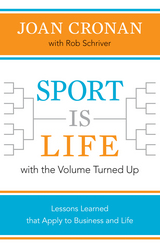 Sport Is Life with the Volume Turned Up: Lessons Learned That Apply to Business and Life
Joan Cronan
University of Tennessee Press, 2014 “Joan and Pat Summitt were what I call 'glass cutters' in building the Tennessee women’s athletics program. They did not break the glass ceiling; they carefully carved their way through.” —Sally Jenkins, Washington Post
“Joan has the ability to bring out the best in people and provide them with the skills to be the best that they can be. It’s refreshing that despite all her vast accomplishments Joan remains humble and sincere.” —Robin Roberts, co-anchor, Good Morning America
“Whether you’re in the board room or the the locker room, there is nothing more important than teamwork. Joan Cronan is a gifted leader of teams, whose passion and devotion has led generations of athletes to be the very best that they can be. Her learning and experience can be a hugely valuable lesson to us all.” —Kenneth W. Lowe, Chairman, President, and CEO, Scripps Networks Interactive
In Sport Is Life with the Volume Turned Up, Joan Cronan offers a refreshing and innovative perspective on strengthening performance and achieving success in both the business world and everyday life. During her twenty-eight years as Women’s Athletics Director for the University of Tennessee, Cronan built one of the most prominent and respected women’s athletics programs in the nation, resulting in ten NCAA titles and twenty-four SEC Tournament Championships for the Lady Vols during her tenure. She reveals in her book what happened behind the scenes in constructing a successful, nationally renowned women’s athletics program—and it turns out that game days were only part of the story.
Cronan’s lighthearted stories and succinct business tips will draw you in until you feel like you are present for every victory she describes on the court and in the workplace. Cronan’s business acumen and passionate approach to positive change will arm you with the outlook and the tools you need to revolutionize the professional and personal spheres in your life.
Joan Cronan is a nationally known speaker and business consultant. For nearly thirty years, she was Director of Women’s Athletics at the University of Tennessee, Knoxville. She was appointed United Way Chair and Chair of Leadership Knoxville, as well as serving on the First Tennessee Bank Advisory Board, as a Trustee for the U.S. Sports Academy, and on the Board of Trustees at Carson-Newman College. Sports Business Journal named her a Champion in Sports Business. She was elected President of the national Association of College Directors of Athletics. Cronan has been inducted into the Louisiana State University Hall of Distinction, the College of Charleston Hall of Fame, the Tennessee Sports Hall of Fame, the Knoxville Sports Hall of Fame, and the Fellowship of Christian Athletes’ Hall of Fame.
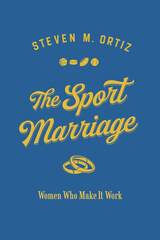 The Sport Marriage: Women Who Make It Work
Steven M. Ortiz
University of Illinois Press, 2020 In The Sport Marriage, Steven M. Ortiz draws on studies he conducted over nearly three decades that focus on the marital realities confronted by women married to male professional athletes. These women, who are usually portrayed in unflattering and/or unrealistic terms, face enormous challenges in their attempts to establish and maintain functional marital and family lives while the husband routinely puts his career first. Ortiz defines the traditional sport marriage as a career-dominated marriage, illustrating how it encourages women to contribute to their own subordination through adherence to an unwritten rulebook and a repertoire of self-management strategies. He explains how they make invaluable contributions to their husbands’ careers while adjusting to public life and trying to maintain family privacy, managing power and control issues, and coping with pervasive groupies, overinvolved mothers, a culture of infidelity, and husbands who prioritize team loyalty. He gives these historically silent women a voice, offering readers perceptive and sensitive insight into what it means to be a woman in the male-dominated world of professional sports.
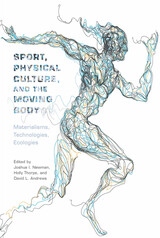 Sport, Physical Culture, and the Moving Body: Materialisms, Technologies, Ecologies
Joshua I. Newman
Rutgers University Press, 2020 2020 Choice Outstanding Academic Title
The moving body—pervasively occupied by fitness activities, intense training and dieting regimes, recreational practices, and high-profile sporting mega-events—holds a vital function in contemporary society. As the body moves—as it performs, sweats, runs, and jumps—it sets in motion an intricate web of scientific rationalities, spatial arrangements, corporate imperatives, and identity politics (i.e. politics of gender, race, social class, etc.). It represents vitality in its productive and physiological capacities, it drives a complex economy of experiences and products, and it is a meaningful site of cultural identities and politics.
Contributors to Sport, Physical Culture, and the Moving Body work from a simple premise: as it moves, the material body matters. Adding to the burgeoning fields of sport studies and body studies, the works featured here draw upon the traditions of feminist theory, posthumanism, actor network theory, and new materialism to reposition the physical, moving body as crucial to the cultural, political, environmental, and economic systems that it constitutes and within which is constituted. Once assembled, the book presents a study of bodies in motion—made to move in contexts where technique, performance, speed, strength, and vitality not only define the conduct therein, but provide the very reason for the body’s being within those economies and environments. In so doing, the contributors look to how the body moving for and about rational systems of science, medicine, markets, and geopolity shapes the social and material world in important and unexpected ways.
In Sport, Physical Culture, and the Moving Body, contributors explore the extent to which the body, when moving about both ostensibly active body spaces (i.e., the gymnasium, the ball field, exercise laboratory, the track or running trail, the beach, or the sport stadium) and those places less often connected to physical activity (i.e. the home, the street, the classroom, the automobile), is bounded to technologies of life and living; and to the political arrangements that seek to capitalize upon such frames of biological vitality. To do so, the authors problematize the rise of active body science (i.e. kinesiology, sport and exercise sciences, performance biotechnology) and the effects these scientific interventions have on embodied, lived experience.
Contributors to Sport, Physical Culture, and the Moving Body will be engaging a range of new and emerging theoretical perspectives, including new materialist, political ecology, developmental systems theory, and new material feminist approaches, to examine the actors and assemblages of movement-based material, political, and economic production. In so doing, contributors will vividly and powerfully illustrate the extent to which a focus on the fleshed body and its material conditions can bring forth new insights or ontological and epistemological innovation to the sociology of sport and physical activity. They will also explore the agency of the body as and amongst things. Such a performative materialist approach explicates how complex assemblages of sport and physical activity—bringing into association everything from muscle fibers and dietary proteins to stadium concrete or regional aquifers—are not only meaningful, but ecological.
By focusing on the confluence of agentive materialities, disciplinary technologies, vibrant assemblages, speculative realities, and vital performativities, Sport, Physical Culture, and the Moving Body promises to offer a groundbreaking departure from representationalist tendencies and orthodoxies brought about by the cultural turn in sport and physical cultural studies. It brings the moving body and its physics back into focus: recentering moving flesh and bones as locus of social order, environmental change, and the global political economy.
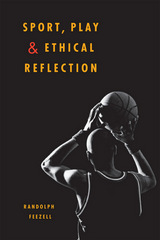 Sport, Play, and Ethical Reflection
Randolph Feezell
University of Illinois Press, 2006 In paperback for the first time, Randolph Feezell’s Sport, Play, and Ethical Reflection immediately tackles two big questions about sport: “What is it?” and “Why does it attract so many people?” Feezell argues that sports participation is best described as a form of human play, and the attraction for participants and viewers alike derives from both its aesthetic richness and narrative structure. He then claims that the way in which sports encourage serious competition in trivial pursuits is fundamentally absurd, and therefore participation requires a state of irony in the participants, where seriousness and playfulness are combined.
Feezell builds on these conclusions, addressing important ethical issues, arguing that sportsmanship should be seen as a kind of Aristotelian mean between the extremes of over- and under-investment in sport. Chapters on cheating, running up the score, and character building stress sport as a rule-governed, tradition-bound practice with standards of excellence and goods internal to the practice. With clear writing and numerous illuminating examples, Feezell demonstrates deep insight into both of his subjects.
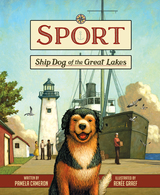 Sport: Ship Dog of the Great Lakes
Pamela Cameron
Wisconsin Historical Society Press, 2019 In 1914 crew members of the lighthouse tender Hyacinth rescued a stray puppy from the Milwaukee River and named him Sport. For the next twelve years, this charming Newfoundland-retriever mix lived the life of a ship dog, helping the Hyacinth crew as they carried supplies to lighthouses and maintained the buoys and other safety features around Lake Michigan. Sport quickly became a valued companion to his crew and a recognizable mascot of the lake—making friends in every port. In this beautifully illustrated children’s book based on historical documents and photographs, readers share in Sport’s adventures while discovering the various ways lighthouse tender ships helped keep the lake safe for others. Helpful diagrams, a map, and a historical note supplement this engaging story for young readers. 2020 Wisconsin Library Association Outstanding Children’s Book of the Year 2020 Midwest Book Award Gold Medal 2020 Library of Michigan Notable Book Award 2019 Historical Society of Michigan State History Award 2019 Moonbeam Children’s Book Award
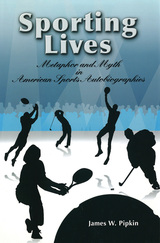 Sporting Lives: Metaphor and Myth in American Sports Autobiographies
James W. Pipkin
University of Missouri Press, 2008 Sometimes the crack of the bat or the roar of the crowd fails to capture the meaning of sports as athletes themselves understand it. Books about sports have ignored this dimension of the subject, particularly the athletes’ own autobiographical accounts. In Sporting Lives, the first book to examine the two popular realms of sports and autobiography, James Pipkin looks at recurring patterns found in athletes’ accounts of their lives and sporting experiences, examining language, metaphor, rhetorical strategies, and other elements to analyze sports from the inside out. Sporting Lives takes a fresh look at memoirs from baseball, football, basketball, golf, and other sports to explore how American athletes see themselves: not only how those images mesh with popular perceptions of them as heroes or celebrities but also how their accounts differ from those of sports journalists and other outsiders. Drawing on the life stories of such well-known figures as Wilt Chamberlain, Babe Ruth, and Martina Navratilova—both as-told-to and self-authored works—Pipkin follows players from the “echoing green” of eternal youth to the sometimes cultlike and isolated status of fame, interpreting recurring patterns both in the living of their lives and in the telling of them. He even considers Dennis Rodman’s four autobiographies to show how the contradictions of his self-portrayals reflect the Janus-faced quality of sports in the era of celebrity culture. As Pipkin shows, the life of the athlete involves more than mere athleticism; it is also a world of nostalgia and sentiment, missed opportunities and lost youth. He sheds light on athletes’ common obsession with youth and body image—including gender and racial considerations—and explores their descriptions of being “in a zone,” that transcendent state when everything seems to click. And he considers the time that all athletes dread, when their bodies begin to betray them . . . and the cheering stops. While the lives of athletes may often suggest the magic of Peter Pan, Pipkin’s engaging study reveals that they are in many ways more like the Lost Boys. Sporting Lives shows that the meaning of sports is intertwined with the telling. It is both an eminently readable book for fans and a critically sophisticated analysis that will engage scholars of literature, sports or media studies, and American popular culture.
A Sporting Time: New York City and the Rise of Modern Athletics, 1820-70
Melvin L. Adelman
University of Illinois Press, 1986 A classic of scholarship, A Sporting Time rewrites the narrative of how Americans embraced sports. Melvin L. Adelman argues that modern sports began its rise long before the close of the nineteenth century. Focusing on games like baseball and cricket, turf sports like horse and harness racing, and competitive activities ranging from rowing to billiards to boxing, Adelman shows how American athletics became increasingly organized and commercialized. He also traces the emergence of national standards and competition, specialized player roles, the growth of sports information systems, and the ideological sanctions that promoted the moral and social benefits of sport.
The Sporting World of the Modern South
Edited by Patrick B. Miller
University of Illinois Press, 2002 Engaging a medley of perspectives and methodologies, these collected essays explore the sport-related symbols and events that have shaped southern regional identities since the Civil War. The authors range from the "backcountry" fighter stereotypes portrayed in modern professional wrestling to the significance of Crimson Tide coaching legend Paul "Bear" Bryant for white Alabamians while other essays tackle gender and race relations in intercollegiate athletics, the roles athletic competitions played in desegregating the South, and NASCAR's popularity in southern states. Pairing the action and anecdotes of good sportswriting with rock-solid scholarship, The Sporting World of the Modern South adds historical and anthropological perspectives to legends and lore from the gridiron to the racetrack.
 Sportista: Female Fandom in the United States
Andrei S. Markovits
Temple University Press, 2012 The typical female sports fan remains very different from her male counterparts. In their insightful and engaging book, Sportista, Andrei S. Markovits and Emily Albertson examine the significant ways many women have become fully conversant with sports—acquiring a knowledge of and passion for them as a way of forging identities that until recently were quite alien to women.
Sportista chronicles the relationship that women have developed with sports in the wake of the second wave of feminism of the late 1960s and early 1970s. The changes women athletes have achieved have been nothing short of revolutionary. But, as Markovits and Albertson argue, women’s identities as sports fans, though also changed in recent decades, remain notably different from that of men. Sportista highlights the impediments to these changes that women have faced and the reality that, even as bona fide fans, they “speak” sports differently from and remain largely unaccepted by men. In the series Politics, History and Social Change, edited by John C. Torpey
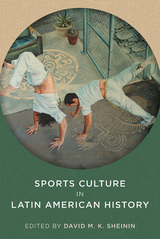 Sports Culture in Latin American History
David M. K. Sheinin
University of Pittsburgh Press, 2015 Perhaps no other activity is more synonymous with passion, identity, bodily ideals, and the power of place than sport. As the essays in this volume show, the function of sport as a historical and cultural marker is particularly relevant in Latin America. From the late nineteenth century to the present, the contributors reveal how sport opens a wide window into local, regional, and national histories. The essays examine the role of sport as a political vehicle, in claims to citizenship, as a source of community and ethnic pride, as a symbol of masculinity or feminism, as allegorical performance, and in many other purposes.
Sports Culture in Latin American History juxtaposes analyses of better-known activities such as boxing and soccer with first peoples’ athletics in Argentina, Cholita wrestling in Bolivia, the African-influenced martial art of capoeira, Japanese Brazilian gateball, the “Art Deco” body ideal for postrevolutionary Mexican women, Jewish soccer fans in Argentina and transgressive behavior at matches, and other topics. The contributors view the local origins and adaptations of these athletic activities and their significance as insightful narrators of history and culture.
Sports Illusion, Sports Reality: A Reporter's View of Sports, Journalism, and Society
Leonard Koppett
University of Illinois Press, 1994 "If this isn't the best analysis of the professional sports business
ever written, I'd like to see the book that beats it. . . . Should be
read by every sports fan or -- for that matter -- social critic."
--From a five-star review, West Coast Review of Books.
"Explores its subject so thoroughly and demolishes so many commonly
held assumptions that after reading it even the most knowledgeable fans
(and some journalists) should feel like drunks who have suddenly been
forced to sober up."
-- Chicago Tribune
"Required reading for anyone who calls himself a fan."
-- Chicago Sun-Times
"An invaluable contribution to sports literature."
-- Howard Cosell
Sports Immortals: Deifying the American Athlete
Peter Williams
University of Wisconsin Press, 1994 The Sports Immortals is the first study to systematically apply the classic theories of psychology and anthropology to sport to present a model of the ways in which we create mythical figures out of actual individuals. Peter Williams begins with the theories of thinkers like Jung, Frazer, and Otto Rank and then shows their application, first to sport itself, then, more specifically, to American sport, and particularly to baseball. The result is a clear illustration of the way in which we insist on making archetypes out of our heroes, and how this process is the same today as it was in ancient Athens and before.
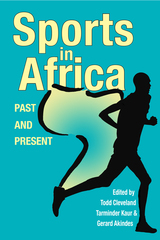 Sports in Africa, Past and Present
Todd Cleveland
Ohio University Press, 2020 These groundbreaking essays demonstrate how Africans past and present have utilized sports to forge complex identities and shape Africa’s dynamic place in the world. Since the late nineteenth century, modern sports in Africa have both reflected and shaped cultural, social, political, economic, generational, and gender relations on the continent. Although colonial powers originally introduced European sports as a means of “civilizing” indigenous populations and upholding then current notions of racial hierarchies and “muscular Christianity,” Africans quickly appropriated these sporting practices to fulfill their own varied interests. This collection encompasses a wide range of topics, including women footballers in Nigeria, Kenya’s world-class long-distance runners, pitches and stadiums in communities large and small, fandom and pay-to-watch kiosks, the sporting diaspora, sports pedagogy, sports as resistance and as a means to forge identity, sports heritage, the impact of politics on sports, and sporting biography.
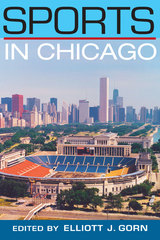 Sports in Chicago
Edited by Elliott Gorn
University of Illinois Press, 2007 Chicago teams have won the World Series, Super Bowl, multiple Stanley Cups, and a string of National Basketball Association titles. But amateur sports also play a large role in the city's athletic traditions, especially in schools and youth leagues that allow people from across the city to add to Chicago sports history. In Sports and Chicago, an all-star roster of experts focuses on multiple aspects of Chicago sports, including long looks at amateur boxing, the impact of gender and ethnicity in sports, the politics of horse racing and stadium building, the lasting scandal of the Black Sox, and the once-perpetual heartbreak of the Cubs. Illustrated with forty photographs, the collection encourages historians and sports fans alike to appreciate the long-standing importance of sports in the Windy City. Contributors: Peter Alter, Robin F. Bachin, Larry Bennett, Linda J. Borish, Gerald Gems, Elliott J. Gorn, Richard Kimball, Gabe Logan, Daniel A. Nathan, Timothy Neary, Steven A. Riess, John Russick, Timothy Spears, Costas Spirou, and Loïc Wacquant.
Sports in the Western World
William J. Baker
University of Illinois Press, 1982 "Human beings cannot live by bread alone. They dream and they strive. Not merely for warmth do they take fire from the altar of the gods; curiosity is their glory and their pain. They climb mountains, cross uncharted seas, and explore outer space for reasons other than material benefit. They thrive on challenges. Seekers of laurel, they especially measure themselves in competition with fellow humans. Where there is no contest, they create one. From deep within, and from millennia past, comes the impulse for athletic competition. This book is about the history of competitive sports in the Western world--from ancient religious ritual and simple tribal contests to highly organized modern spectacles."--From the introduction
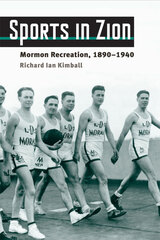 Sports in Zion: Mormon Recreation, 1890-1940
Richard Ian Kimball
University of Illinois Press, 2002 If a religion cannot attract and instruct young people, it will struggle to survive, which is why recreational programs were second only to theological questions in the development of twentieth-century Mormonism. In this book, Richard Ian Kimball explores how Mormon leaders used recreational programs to ameliorate the problems of urbanization and industrialization and to inculcate morals and values in LDS youth. As well as promoting sports as a means of physical and spiritual excellence, Progressive Era Mormons established a variety of institutions such as the Deseret Gymnasium and camps for girls and boys, all designed to compete with more "worldly" attractions and to socialize adolescents into the faith. Kimball employs a wealth of source material including periodicals, diaries, journals, personal papers, and institutional records to illuminate this hitherto underexplored aspect of the LDS church. In addition to uncovering the historical roots of many Mormon institutions still visible today, Sports in Zion is a detailed look at the broader functions of recreation in society.
 Sports Medicine for Parents and Coaches
Daniel J. Boyle, MD
Georgetown University Press, 1999 From five-year-olds playing T-ball to teenagers showing off their inline skating skills, kids love participating in sports. Their parents, who often know little about their child's chosen sport, assume the roles of cheerleader, coach, or, when injuries occur, trainer. For these parent-coaches, here is a comprehensive, illustrated guide to preventing and treating sports-related injuries written by a family physician certified in sports medicine. FEATURES: - Explains the physical and psychological readiness of children for certain sports at different ages - Identifies injuries by the part of the body
Lists sport-specific injuries, from baseball through wrestling - Emphasizes preventing injuries and illness - Contains a glossary of basic medical terms - Includes illustrations of injuries and preventive exercises Whether their kids are avid or occasional athletes, this handy reference will increase parents' ability to deal with minor injuries and to identify potentially more serious problems that require professional attention.
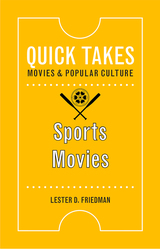 Sports Movies
Lester D. Friedman
Rutgers University Press, 2020 From Rocky to Field of Dreams, sports movies are among the most beloved of American films. Revolving around familiar narratives like the underdog story, these movies have generated modern-day legends, reinforcing and disseminating our national myths about the American Dream.
In Sports Movies, Lester D. Friedman describes the traditional formulas that have made these movies such crowd-pleasers, including stock figures like the disgraced athlete on a quest for redemption, or the wise old coaches who help mentor the heroes to victory. He also explores how the genre’s attitudes have changed over time, especially in key issues like class, race, masculinity, and women in sports.
Along the way, he takes stock of sports films from the dawn of cinema’s silent era to the present day, including classic baseball movies like Pride of the Yankees and Bull Durham, basketball movies like Hoosiers and He’s Got Game, football movies like Friday Night Lights and Rudy, and boxing movies like Raging Bull and Million Dollar Baby. As Friedman’s analyses reveal, not only do sports movies influence our perceptions about the drama of real-life sports, but they also help to shape our attitudes toward the competitive ethos in American life.
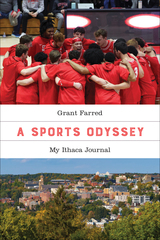 A Sports Odyssey: My Ithaca Journal
Grant Farred
Temple University Press, 2025 Grant Farred has long had a passionate connection with sports. In A Sports Odyssey, he weaves together an account of his own sports fandom that is profoundly personal and universal.
As readers of his Long Distance Love know, Grant Farred has been a supporter of the English Premier League club, Liverpool Football Club, for decades. His fandom for that team launched an unexpected connection with a world beyond the limits of the apartheid state of his upbringing in South Africa. However, A Sports Odyssey shows that as Farred’s fervor for Liverpool ended, he developed a new set of sports attachments in Ithaca, New York: to his son’s youth basketball career, to the men’s basketball team at Cornell University and its coach, and even to professional teams like the New York Knicks. Farred’s bemusement at finding himself a sports parent, a New Yorker, and a company man, only underline the sincerity of his affections.
In A Sports Odyssey, Farred writes elegantly and eloquently about how sports and sports fandom create a sense of belonging, but also loss. This is a heartfelt examination of how we find “home” in who and what we love.
In the series Sporting
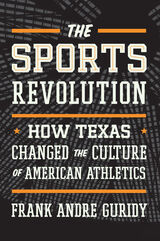 The Sports Revolution: How Texas Changed the Culture of American Athletics
By Frank Andre Guridy
University of Texas Press, 2021 The story of Texas’s impact on American sports culture during the civil rights and second-wave feminist movements, this book offers a new understanding of sports and society in the state and the nation as a whole.
In the 1960s and 1970s, America experienced a sports revolution. New professional sports franchises and leagues were established, new stadiums were built, football and basketball grew in popularity, and the proliferation of television enabled people across the country to support their favorite teams and athletes from the comfort of their homes. At the same time, the civil rights and feminist movements were reshaping the nation, broadening the boundaries of social and political participation. The Sports Revolution tells how these forces came together in the Lone Star State. Tracing events from the end of Jim Crow to the 1980s, Frank Guridy chronicles the unlikely alliances that integrated professional and collegiate sports and launched women’s tennis. He explores the new forms of inclusion and exclusion that emerged during the era, including the role the Dallas Cowboys Cheerleaders played in defining womanhood in the age of second-wave feminism. Guridy explains how the sexual revolution, desegregation, and changing demographics played out both on and off the field as he recounts how the Washington Senators became the Texas Rangers and how Mexican American fans and their support for the Spurs fostered a revival of professional basketball in San Antonio. Guridy argues that the catalysts for these changes were undone by the same forces of commercialization that set them in motion and reveals that, for better and for worse, Texas was at the center of America’s expanding political, economic, and emotional investments in sport.
Sports: The First Five Millennia
Allen Guttmann
University of Massachusetts Press, 2004 From ancient Egyptian archery and medieval Japanese football to contemporary American baseball, every sport has been shaped by—and in turn has helped shape—the culture of which it is part. Yet as Allen Guttmann shows in this far-ranging study, for all their differences sports have followed a similar historical trajectory from traditional to modern forms.
In Sports: The First Five Millennia, Guttmann traces this evolution across continents, cultures, and historical epochs to construct a single comprehensive narrative of the world's sports.
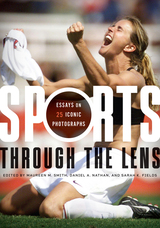 Sports through the Lens: Essays on 25 Iconic Photographs
Edited by Maureen M. Smith, Daniel A. Nathan, and Sarah K. Fields
University of Texas Press, 2024 2025 Anthology Award, North American Society for Sport History The stories behind and legacies of important sports photos from the last 130 years. Ever since photography and professional sports originated in the nineteenth century, photographers have shaped how we perceive sports. Sports through the Lens collects essays by twenty-five historians that consider what it means to capture and revisit a moment of cultural significance in sports, looking at each photo’s creation, its contexts, and how its meaning has shifted over time. Some essays provide fresh perspectives on such iconic images as Muhammad Ali standing over Sonny Liston at their 1965 rematch and Michael Jordan soaring at the 1988 NBA All-Star Game slam dunk competition; others introduce readers to the lesser-known stories of the first woman to officially run the Boston Marathon or the inaugural World Indigenous Games. The authors examine the photos' legacies alongside the artistry of both the athletes and the photographers. Reflecting on images of athletes from around the world engaged in sports from baseball to horse-racing to hockey, Sports through the Lens provides a wide-ranging meditation on the visual, historical, and cultural meaning of sports photographs.
Sportsex
Toby Miller
Temple University Press, 2002 Sportsex examines the landscape of sports writ globally. And it is about the way sport allows men and women -- but mostly men - to consider their looks, their vitality, and their relationship to their gender in ways that in any other context would be considered taboo.
Miller pays particular attention to the way celebrity is considered around the world through a number of different athletic activities. Along the way he also offers his own personal connection to sport as both a researcher and recipient of its abuses and pleasures.
In a world where everything is considered in its relationship to globalization, sport is one of the few arenas of social life that can be concretely seen in international terms. Sportsex opens that world up in a way that is accessible and significant for anyone interested in the shape of our emerging world culture.
SportsWars: Athletes in the Age of Aquarius
David Zang
University of Arkansas Press, 2001 The Vietnam era's tensions—between tradition and new possibilities, black and white, young and old, male and female—were played out on the field of professional and organized sports. SportsWars shows that the century-old position of sports as the standard-bearer for American values, and as a central way of building character, made it a prime target in this time of general disenchantment. Critics began to challenge not only individual abuses but sport's very ideals, and for the first time these critics included athletes themselves. Zang locates a variety of larger cultural debates within professional sports and organized sports more generally: changing valuations of hard work and the physical, winning versus character, and challenges to authority. He also considers the relationships between sports and other domains of popular culture, including the counterculture, rock and roll, and Hollywood.
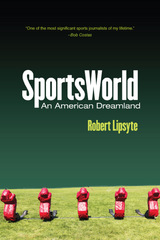 SportsWorld: An American Dreamland
Lipsyte, Robert
Rutgers University Press, 2018 Tough and witty, SportsWorld is a well-known commentator’s overview of the most significant form of mass culture in America—sports. It’s a sweaty Oz that has grown in a century from a crucible for character to a complex of capitalism, a place where young people can find both self-fulfillment and cruel exploitation, where families can huddle in a sanctuary of entertainment and be force fed values and where cities and countries can be pillaged by greedy team owners and their paid-for politicians. But this book is not just a screed, it’s a guided visit with such heroes of sports as Muhammad Ali, Billie Jean King, Kareem Abdul-Jabbar, and Joe Namath, who the author knew well, and with some he met in passing, like Richard Nixon, who seemed never to have gotten over missing the cut in college varsity football, a major mark of manhood. We see how SportsWorld sensibilities help elect our politicians, judge our children, fight our wars, and oppress our minorities. And now featuring a new introduction by the author,SportsWorld is a book that will provide the foundation for understanding today’s world of sports and the time of Trump.
In the America of 2017—where the SuperBowl is worth billions, athletes are penalized or forced out of sports for political and anti-racist activism, and Title IX is constantly questioned and undermined—Robert Lipsyte’s 1975 critique remains startlingly and intensely relevant.
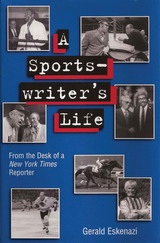 A Sportswriter's Life: From the Desk of a New York Times Reporter
Gerald Eskenazi
University of Missouri Press, 2004 In 1959, Gerald Eskenazi dropped out of City College, not for the first time, and made his way to the New York Times. That day the paper had two openings—one in news and one in sports. Eskenazi was offered either for thirty-eight dollars a week. He chose sports based on his image of the sports department as a cozier place than the news department. Forty-one years and more than eighty-four hundred stories later, New Yorkers know he made the right decision. When Eskenazi started reporting, sports journalism had a different look than it does today. There was a camaraderie between the reporters and the players due in part to the reporters’ deference to these famous figures. Unlike today, journalists stayed out of the locker rooms, and didn’t ask questions about the players’ home lives or their feelings about matters other than the sports that they played. In A Sportswriter’s Life, Eskenazi details how much sports and America have changed since then. His anecdotes regarding famous and infamous sports figures from baseball great Joe DiMaggio to boxer Mike Tyson illustrate the transformation that American culture and journalism have undergone in the past fifty years. Eskenazi gives a behind-the-scenes look into the journalistic techniques that go into crafting a story, as well as the pitfalls reporters fall into. There are cautionary tales of journalistic excess, as well as moments of triumph such as the time Eskenazi got Joe Namath to open up to him by admitting he was a sportswriter who knew nothing about football. Along the way, Eskenazi discusses interviewing other reluctant subjects and writing under the intense pressure of a deadline. A Sportswriter’s Life is a revealing look at the people and events that were part of the history of sports from a perspective usually unavailable to the public. Eskenazi’s inside stories of sports are not always flattering, but they are always amusing, touching, and revealing. This entertaining volume will be enjoyed by anyone with an interest in reporting, sports, or just a good story.
SPOT IN THE DARK
BETH GYLYS
Ohio State University Press, 2004 Spot in the Dark is a collection of poetry exploring the nuances of human relationships. From new love to extramarital affairs to dating to solitude, the book’s four sections read as a journey by a series of narrators who wrestle through the beginning and middle stages of love, the complications of an affair, and the challenges of single life, and finally come to focus on the external world: the beauty and starkness of a winter landscape, the ebullience of spring, the breathtaking loveliness of a sunset. The book’s arc moves from examining the human wish and will to connect to another to presenting the self as part of a larger, richer, and more complicated set of external relationships. Written predominantly in free verse, these sometimes meditative, sometimes cynical, sometimes playful poems sift through the difficulties and pleasures of living in the world.
Spotted Ponies: The Collected Zines
Mag Gabbert, Chen Chen, Tarfia Faizullah, Leila Chatti, and Carly Joy Miller with artwork by Taylor Dolan
Bridwell Press, 2025 Here, within these collected zines, you’ll find enough spotted ponies to fill at least three large stables to the brim. Although, of course, you wouldn’t have much luck coaxing them in there. No, instead, it’s likely because of the free rein they’ve been given, because they’ve been cut loose, that so many spotted ponies seem to have chosen these poems as their breeding ground. We’ve never offered them much scrutiny; never subjected them to any polishing or meticulous adjustments. Each of our spotted ponies simply exists in its natural state, as a product of our own wild abandon.
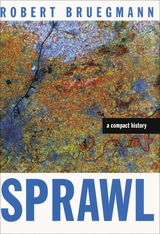 Sprawl: A Compact History
Robert Bruegmann
University of Chicago Press, 2005 As anyone who has flown into Los Angeles at dusk or Houston at midday knows, urban areas today defy traditional notions of what a city is. Our old definitions of urban, suburban, and rural fail to capture the complexity of these vast regions with their superhighways, subdivisions, industrial areas, office parks, and resort areas pushing far out into the countryside. Detractors call it sprawl and assert that it is economically inefficient, socially inequitable, environmentally irresponsible, and aesthetically ugly. Robert Bruegmann calls it a logical consequence of economic growth and the democratization of society, with benefits that urban planners have failed to recognize. In his incisive history of the expanded city, Bruegmann overturns every assumption we have about sprawl. Taking a long view of urban development, he demonstrates that sprawl is neither recent nor particularly American but as old as cities themselves, just as characteristic of ancient Rome and eighteenth-century Paris as it is of Atlanta or Los Angeles. Nor is sprawl the disaster claimed by many contemporary observers. Although sprawl, like any settlement pattern, has undoubtedly produced problems that must be addressed, it has also provided millions of people with the kinds of mobility, privacy, and choice that were once the exclusive prerogatives of the rich and powerful. The first major book to strip urban sprawl of its pejorative connotations, Sprawl offers a completely new vision of the city and its growth. Bruegmann leads readers to the powerful conclusion that "in its immense complexity and constant change, the city-whether dense and concentrated at its core, looser and more sprawling in suburbia, or in the vast tracts of exurban penumbra that extend dozens, even hundreds, of miles-is the grandest and most marvelous work of mankind." “Largely missing from this debate [over sprawl] has been a sound and reasoned history of this pattern of living. With Robert Bruegmann’s Sprawl: A Compact History, we now have one. What a pleasure it is: well-written, accessible and eager to challenge the current cant about sprawl.”—Joel Kotkin, The Wall Street Journal
“There are scores of books offering ‘solutions’ to sprawl. Their authors would do well to read this book.”—Witold Rybczynski, Slate
 Sprawl and Suburbia: A Harvard Design Magazine Reader
William Saunders
University of Minnesota Press, 2005 Sprawl is the single most significant and urgent issue in American land use at the turn of the twenty-first century. Efforts to limit and reform sprawl through legislative “Smart Growth” initiatives have been enacted around the country while the neotraditionalist New Urbanism has been embraced by many architects and urban planners. Yet most Americans persist in their desire to live farther and farther away from urban centers, moving to exurbs made up almost entirely of single-family residential houses and stand-alone shopping areas.
Sprawl and Suburbia brings together some of the foremost thinkers in the field to present in-depth diagnosis and critical analysis of the physical and social realities of exurban sprawl. Along with an introduction by Robert Fishman, these essays call for architects, urban planners, and landscape designers to work at mitigating the impact of sprawl on land and resources and improving the residential and commercial built environment as a whole. In place of vast residential exurbs, these writers offer visions of a fresh urbanism—appealing and persuasive models of life at greater density, with greater diversity, and within genuine communities.
With sprawl losing the support of suburban citizens themselves as economic, environmental, and social costs are being paid, Sprawl and Suburbia appears at a moment when design might achieve some critical influence over development—if architects and planners accept the challenge.
Contributors: Mike Davis, Ellen Dunham-Jones, Peter Hall, David Harvey, Jerold S. Kayden, Matthew J. Kiefer, Alex Krieger, Andrew Ross, James S. Russell, Mitchell Schwarzer.
William S. Saunders is editor of Harvard Design Magazine and assistant dean for external relations at the Harvard Design School. He is the author of Modern Architecture: Photographs by Ezra Stoller.
Robert Fishman is professor of architecture and urban planning at the Taubman College of Architecture, University of Michigan. He is author of Bourgeois Utopias: The Rise and Fall of Suburbia and editor of The American Planning Tradition: Culture and Policy.
 Sprawl City: Race, Politics, and Planning in Atlanta
Edited by Robert D. Bullard, Glenn S. Johnson, and Angel O. Torres
Island Press, 2000 A serious but often overlooked impact of the random, unplanned growth commonly known as sprawl is its effect on economic and racial polarization. Sprawl-fueled growth pushes people further apart geographically, politically, economically, and socially. Atlanta, Georgia, one of the fastest-growing areas in the country, offers a striking example of sprawl-induced stratification.Sprawl City uses a multi-disciplinary approach to analyze and critique the emerging crisis resulting from urban sprawl in the ten-county Atlanta metropolitan region. Local experts including sociologists, lawyers, urban planners, economists, educators, and health care professionals consider sprawl-related concerns as core environmental justice and civil rights issues.Contributors focus on institutional constraints that are embedded in urban sprawl, considering how government housing, education, and transportation policies have aided and in some cases subsidized separate but unequal economic development and segregated neighborhoods. They offer analysis of the causes and consequences of urban sprawl, and outline policy recommendations and an action agenda for coping with sprawl-related problems, both in Atlanta and around the country.Contributors are Natalie Brown, Robert D. Bullard, William W. Buzbee, James Chapman, Dennis Creech, Russell W. Irvine, Charles Jaret, Chad G. Johnson, Glenn S. Johnson, Kurt Phillips, Elizabeth P. Ruddiman, and Angel O. Torres.The book illuminates the rising class and racial divisions underlying uneven growth and development, and provides a timely source of information for anyone concerned with those issues, including the growing environmental justice movement as well as planners, policy analysts, public officials, community leaders, and students of public policy, geography, or planning.
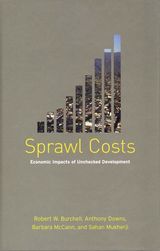 Sprawl Costs: Economic Impacts of Unchecked Development
Robert Burchell, Anthony Downs, Barbara McCann, and Sahan Mukherji
Island Press, 2005 The environmental impacts of sprawling development have been well documented, but few comprehensive studies have examined its economic costs. In 1996, a team of experts undertook a multi-year study designed to provide quantitative measures of the costs and benefits of different forms of growth. Sprawl Costs presents a concise and readable summary of the results of that study. The authors analyze the extent of sprawl, define an alternative, more compact form of growth, project the magnitude and location of future growth, and compare what the total costs of those two forms of growth would be if each was applied throughout the nation. They analyze the likely effects of continued sprawl, consider policy options, and discuss examples of how more compact growth would compare with sprawl in particular regions. Finally, they evaluate whether compact growth is likely to produce the benefits claimed by its advocates. The book represents a comprehensive and objective analysis of the costs and benefits of different approaches to growth, and gives decision-makers and others concerned with planning and land use realistic and useful data on the implications of various options and policies.
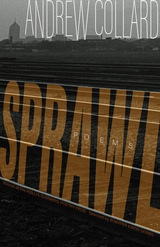 Sprawl: Poems
Andrew Collard
Ohio University Press, 2023 These lyrical poems about growing up and becoming a parent in Detroit reflect deeply felt connections to places and experiences that inevitably fall victim to irrevocable change. Sprawl is a reconstruction of the constantly shifting landscape of metropolitan Detroit, which extends over six counties and is home to over four million people, from the perspective of a single parent raising a young child amid financial precarity. Part memoir, part invention, the book is Andrew Collard’s attempt to reconcile the tenderness and sense of purpose found in the parent-child relationship with ongoing societal crises in the empire of the automobile. Here, a mansion may contrast with a burned-out home just up the street. How does one construct a sense of place in such a landscape, where once-familiar neighborhoods turn to strip malls or empty lots and the relationships that root us dissolve? Sprawl suggests that there is solace in recognizing that when we ask this question, we are never alone in asking. Within the larger geographical space of the metropolis are the in-between places of personal significance: the gas stations, burger joints, malls, and parking lots where many of the defining moments of ordinary lives occur. These poems take deep inspiration from such places, insisting on the value of the people found there, along with their experiences. What might be considered high and low culture are as inextricably linked in the formal cues of the poems as they are in the Michigan landscape, influenced by pop music, midcentury modern aesthetics, comic books, and cars. While the sprawl of the title refers to the seemingly endless succession of businesses and neighborhoods extending north from Detroit (“a sprawl this extensive breeds / empty pockets”), it also invokes the sprawl of history through poems that move between the past and present. One sequence of poems built on old newspaper clippings draws attention to a Chrysler plant that once constructed Redstone missiles. Elsewhere, two poems refer to the Detroit newspaper strike of the 1990s, a local controversy with lasting implications for the community. Sprawl ultimately illuminates the relationship of one place to other places, contextualizing its characters and locales within a wider societal frame.
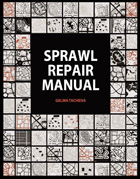 Sprawl Repair Manual
Galina Tachieva
Island Press, 2010 There is a wealth of research and literature explaining suburban sprawl and the urgent need to retrofit suburbia. However, until now there has been no single guide that directly explains how to repair typical sprawl elements. The Sprawl Repair Manual demonstrates a step-by-step design process for the re-balancing and re-urbanization of suburbia into more sustainable, economical, energy- and resource-efficient patterns, from the region and the community to the block and the individual building. As Galina Tachieva asserts in this exceptionally useful book, sprawl repair will require a proactive and aggressive approach, focused on design, regulation and incentives. The Sprawl Repair Manual is a much-needed, single-volume reference for fixing sprawl, incorporating changes into the regulatory system, and implementing repairs through incentives and permitting strategies. This manual specifies the expertise that’s needed and details the techniques and algorithms of sprawl repair within the context of reducing the financial and ecological footprint of urban growth.
The Sprawl Repair Manual draws on more than two decades of practical experience in the field of repairing and building communities to analyze the current pattern of sprawl development, disassemble it into its elemental components, and present a process for transforming them into human-scale, sustainable elements. The techniques are illustrated both two- and three-dimensionally, providing users with clear methodologies for the sprawl repair interventions, some of which are radical, but all of which will produce positive results.
Spread Spectrum in Communication
R. Skaug
The Institution of Engineering and Technology, 1985 The book is devoted to advanced radiocommunication, discussing the merits and operational aspects of spread spectrum signalling. Spread spectrum modulation is emerging as one of the most important tools for combatting a wide range of problems usually encountered in radiocommunication. For military applications the signalling is able to resist difficulties deliberately introduced by an enemy, such as jamming and eavesdropping. For civil application, the efficient signal multiplexing and multipath rejection capability is of great interest. The price paid however is the need for very complex processing of the radio signals. This task put great challenges on new technologies and design, and it is only recently that operational systems have started to emerge from the laboratories.
Spread Spectrum in Mobile Communication
Olav Berg
The Institution of Engineering and Technology, 1998 Mobile communication is one of the most important applications in the tele-communications and IT field. Developments in technology are enabling the design of advanced mobile radio networks linking information processing and data routing, with the radio segment sandwiched between layers of digital signal processors. Spread spectrum technology adapts radio communication to computational data information processing networks.
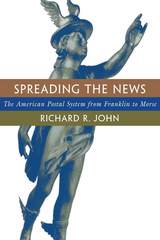 Spreading the News: The American Postal System from Franklin to Morse
Richard R. John
Harvard University Press, 1995 In the seven decades from its establishment in 1775 to the commercialization of the electric telegraph in 1844, the American postal system spurred a communications revolution no less far-reaching than the subsequent revolutions associated with the telegraph, telephone, and computer. This book tells the story of that revolution and the challenge it posed for American business, politics, and cultural life.
During the early republic, the postal system was widely hailed as one of the most important institutions of the day. No other institution had the capacity to transmit such a large volume of information on a regular basis over such an enormous geographical expanse. The stagecoaches and postriders who conveyed the mail were virtually synonymous with speed.
In the United States, the unimpeded transmission of information has long been hailed as a positive good. In few other countries has informational mobility been such a cherished ideal. Richard John shows how postal policy can help explain this state of affairs. He discusses its influence on the development of such information-intensive institutions as the national market, the voluntary association, and the mass party. He traces its consequences for ordinary Americans, including women, blacks, and the poor. In a broader sense, he shows how the postal system worked to create a national society out of a loose union of confederated states. This exploration of the role of the postal system in American public life provides a fresh perspective not only on an important but neglected chapter in American history, but also on the origins of some of the most distinctive features of American life today.
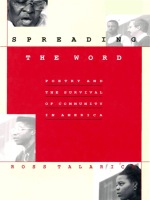 Spreading the Word: Poetry and the Survival of Community in America
Ross Talarico
Duke University Press, 1995 In 1985 poet Ross Talarico began a grassroots program in creative expression in Rochester, New York. As the program came together, so did the community—young and old, poor and privileged, even those who could not read or write but wanted to tell their stories. This book is a testimony to the poetry that experience produced. An exhilarating account of a successful experiment in promoting community self-expression, Spreading the Word interweaves the participants’ stories with Talarico’s own life, his struggle as a poet, and the drama of his workshops. The book will be both a resource and an inspiration for teachers of writing, writers, and those who simply wish to learn to write.
Drawing on his workshops in Rochester, Talarico describes a unique approach for eliciting poetry from people of many ages and backgrounds—particularly underpriviledged urban kids and the elderly. The process—from dialogue to self-expression to publication to public event—illuminates the urgency and meaning of releasing the spirit captured in each man and woman and child’s experience. "Some people say that Ross Talarico has done the impossible," the Today Show remarked of his success in Rochester; and with this book Talarico offers the same opportunity to others. Teachers, community leaders, parents, and children will be able to follow his practical, hands-on approach to encouraging self-expression in diverse, even unlikely, settings. They will see here how poetry is indeed relevant, ever more crucial to our identity as the culture evolves—how it is, finally, the place where the inarticulate can come to speak for themselves.
Spring
Oni Buchanan
University of Illinois Press, 2008 2009 Massachusetts Book Awards Winner Representing nothing less than a tour-de-force of formal invention and emotional intensity, Oni Buchanan’s Spring encompasses radically contrasting work. Ecstatic, visually intricate rhapsodies are juxtaposed with tight, sonnet-like poems, and wispy columns of verse brush up against large-scale epics and kinetic text. This collection’s point of departure is the paradox of existence as an individual in a political and violent world. All of the formal innovations in this book have in common an urgent need for texture and polyphony, and the poems attempt to discover how to fulfill the individual human responsibility of surviving as a resiliently loving and hopeful living creature. An accompanying multimedia compact disc offers a full Flash-animated version of the printed kinetic work, “The Mandrake Vehicles.”
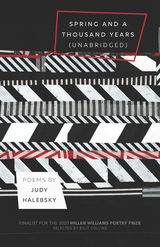 Spring and a Thousand Years (Unabridged): Poems
Judy Halebsky
University of Arkansas Press, 2020 Finalist, 2020 Miller Williams Poetry Prize A translator’s notebook, an almanac, an ecological history, Judy Halebsky’s Spring and a Thousand Years (Unabridged) moves between multiple intersections and sign systems connected in a long glossary poem that serves as the book’s guide to what is lost, erased, or disrupted in transition both from experience to written word and from one language, location, and time period to another. Writers Li Bai, Matsuo Bashō, Sei Shōnagon, and Du Fu make frequent appearances in centuries ranging from the eighth to the twenty-first, and appear in conversation with Grace Paley, Donald Hall, and Halebsky herself, as the poet explores subjects ranging from work and marriage to environmental destruction. Asking what would happen if these poets—not just their work—appeared in California, the poems slip between different geographies, syntaxes, times, and cultural frameworks. The role of the literary translator is to bring text from one language into another, working to at once shift and retain the context of the original—from one alphabet to another, one point in time to another. These are poems in homage to translation; they rely on concepts that can bridge time and space, and as a result are as likely to find meaning in donuts or Zumba as they are to find it in the ocean. Spring and a Thousand Years (Unabridged) finds reasons for hope not in how the world should be, but in how it has always been.
Spring Flora of Wisconsin: A Manual of Plants Growing without Cultivation and Flowering Before June 15
Norman C. Fassett; Revised and enlarged by Olive S. Thomson
University of Wisconsin Press, 1976 "[For the] professional botanist and botanical buff alike. . . . More than one hundred new illustrations have been added; revisions in content take into account the changing distribution of species, the introduction of new species, and more complete descriptions for many families and genera. . . . Like the seed catalogs, Spring Flora will set you dreaming of the season ahead."—Wisconsin Academy Review
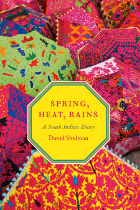 Spring, Heat, Rains: A South Indian Diary
David Shulman
University of Chicago Press, 2008 “Rocks. Goats. Dry shrubs. Buffaloes. Thorns. A fallen tamarind tree.” Such were the sights that greeted David Shulman on his arrival in the South Indian state of Andhra Pradesh in the spring of 2006. An expert on South Indian languages and cultures, Shulman knew the region well, but from the moment he arrived for this seven-month sojourn he actively soaked up such simple aspects of his surroundings, determined to attend to the rich texture of daily life—choosing to be at the same time scholar and tourist, wanderer and wonderer. Lyrical, sensual, and introspective, Spring, Heat, Rains is Shulman’s diary of that experience. Evocative reflections on daily events—from explorations of crumbling temples to battles with ineradicable bugs to joyous dinners with friends—are organically interwoven with considerations of the ancient poetry and myths that remain such an inextricable part of life in contemporary India. With Shulman as our guide, we meet singers and poets, washermen and betel-nut vendors, modern literati and ancient gods and goddesses. We marvel at the “golden electrocution” that is the taste of a mango fresh from the tree. And we plunge into the searing heat of an Indian summer, so oppressive and inescapable that when the monsoon arrives to banish the heat with sheets of rain, we understand why, year after year, it is celebrated as a miracle. An unabashedly personal account from a scholar whose deep knowledge has never obscured his joy in discovery, Spring, Heat, Rains is a passionate act of sharing, an unforgettable gift for anyone who has ever dreamed of India.
Spring Training
William Zinsser
University of Pittsburgh Press, 2003
Spring training, a time when every team is in first place, is an American tradition dating back to the early years of the twentieth century. William Zinsser vividly brings to life the unique, once-a-year relationship between Bradenton, Florida, and its adopted team, the Pittsburgh Pirates.
In 1988 the Pirates were an unproven yet promising bunch with high hopes of competing for the National League pennant. Given rare access to players, management, scouts and umpires, Zinsser sought to discover how a team prepares for the longest season in professional sports.
As valid today as it was when first published, Spring Training reveals how the fundamentals of baseball are taught and learned. The author has added a new introduction and postscript, which includes a lengthy interview with manager Jim Leyland about the lessons that can be learned from losing.
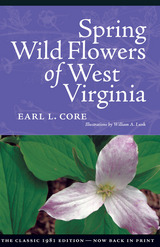 SPRING WILDFLOWERS OF WEST VIRGINIA
EARL L. CORE
West Virginia University Press, 2005 Back in print just in time for spring! Originally published in 1948, this is the germinal text on nearly 250 species of spring wildflowers found in West Virginia. Common or English names and scientific or Latin names are given for each species. The descriptions are in two sections: The first description includes the meaning of the name of the flower, uses, habitats, and ranges in West Virginia. Secondly, the plant itself is described in deep detail to help in identification. Each description is accompanied by a facing page detailed line drawing. This book is a must have for those interested in the beauty and science of West Virginia's spring flora. The author, Earl L. Core, also co-wrote the four-volume Flora of West Virginia. He received his bachelor's and master's degrees from West Virginia University and his doctorate from Columbia. He was a biology professor at WVU where the 75-acre arboretum managed by the university bears his name. The illustrator, William A. Lunk, received his doctorate at the University of Michigan and went on to become curator of their University Museums.
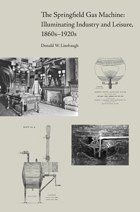 The Springfield Gas Machine: Illuminating Industry and Leisure, 1860s–1920s
Donald W. Linebaugh
University of Tennessee Press, 2012
Developed just after the close of the Civil War, the Springfield Gas Machine was a unique commercial and domestic gas lighting system marketed for use in homes and businesses outside of a city’s gas works. The self-contained unit was perfectly suited to accommodate an expanding rural and suburban U.S. landscape as middle- and upper-class American families were looking to find simplicity in the countryside without losing any modern comforts of the city. Industries, too, were looking for a means to operate more efficiently and implement longer work hours for various production operations. Perhaps more important, owners of the Springfield system could retain control of their light production during a time when corporations were reaping large benefits from their monopolistic hold over municipal gas works.
In addition to detailing preserved Springfield systems across the country, Donald W. Linebaugh uses newspapers and magazine articles, advertisements, patents, and even mail-order catalogs to tell the story of this one-of-a-kind unit. The Gilbert and Barker Manufacturing Company's innovative business plan established them as a leader in the manufacture of gas lighting devices. By taking gasoline from an oft-discarded byproduct of refining crude oil to a viable fuel source, the company paved the way for other gas-powered appliances to improve household management strategies and industrial production. In capturing the pre-automobile market for gasoline, Gilbert and Barker attracted the attention of the Standard Oil Trust, presaging the oil-industry dominance over gasoline production that continues today.
The story of the Springfield gas machine ends in the early twentieth century as the advent of electricity proved more available to the masses with considerably less expense. However, gas lighting was, for its time, a major innovation in domestic and commercial lighting, and it changed daily life and social behaviors in the late nineteenth century as the comforts of home became a reality for suburban and rural Americans.
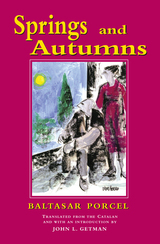 Springs and Autumns
Baltasar Porcel
University of Arkansas Press, 2000 Springs and Autumns is a compelling novel that chronicles, through the voices of several family members, the intriguing history of an extended Majorcan family. The novel is set in Orlandis (a fictional version of Porcel’s hometown) on the island of Majorca. Even though the novel rises from this specific, exotic island setting, Springs and Autumns ultimately appeals to universal human emotions. John German has captured the rhythm and poetic nature of Porcel’s prose in his translation of Springs and Autumns. Working from Porcel’s original Catalan and Spanish versions of the text, Getman manages to remain faithful to the feel and tone of Porcel’s narrative while at the same time creating an exceptionally lucid English version. Although the entire novel takes place as the family gathers at Taltavull Hall for a Christmas Eve dinner, the reader is conveyed to places as far away as South America and Asia, learning along the way about murder, love, rape, incest, travel, discovery, regret, and forgiveness. Porcel accomplishes this through a narrative strategy that pieces together a complex mosaic of the family’s history, with each new narrative layer adding insight to the previous narratives, ultimately creating a complex and engaging novel.
The Springs of Liberty: The Satiric Tradition and Freedom of Speech
Stewart Justman
Northwestern University Press, 1999 The Springs of Liberty takes up questions of literary history and theory and explores sources of power harnessed by modern political doctrines and the journalism that conveys them to the public. These forces of opinion are traced to a tradition deeper and older than either: satire. In that tradition—its power, diversity, and license—the author locates the spirit of free speech.
 Springs of Scientific Creativity: Essays on Founders of Modern Science
claire Aris
University of Minnesota Press, 1983 Springs of Scientific Creativity was first published in 1983.Mathematician Henri Poincaré was boarding a bus when he realized that the transformations of non-Euclidian geometry were just those he needed in his research on the theory of functions. He did not have to interrupt his conversation, still less to verify the equation in detail; his insight was complete at that point. Poincaré’s insight into his own creativity -- his awareness that preliminary cogitation and the working of the subconscious had prepared his mind for an intuitive flash of recognition -- is just one of many possible analyses of scientific creativity, a subject as fascinating as it is elusive.The authors of this book have chosen to search for the springs of scientific creativity by examining the lives and work of a dozen innovative thinkers in the fields of mathematics, physics, and chemistry from the seventeenth down to the mid-twentieth century. First prepared for delivery in a lecture series held at the University of Minnesota, these essays delve into the social, psychological, and intellectual factors that fostered creativity in the lives of Galilei Galileo, Isaac Newton, J. P. Joule, James Cler Maxwell, Josiah Willard Gibbs, Lord Rayleigh, Elmer Sperry and Adrian Leverkühn, Walter Nernst, Albert Einstein, Erwin Schrödinger, Michael Polyani, and John von Neumann.The contributors are Thomas B. Settle, Richard S. Westfall, Donald S. L. Cardwell, C. W. F. Everitt, Martin J. Klein, John N. Howard, Thomas P. Hughes, Erwin N. Hiebert, Stanley Goldberg, Linda Wessels, William T. Scott, and Herman H. Goldstine.
 The Sprites of Kernosy Castle
Henriette-Julie de Castelnau, Countess de Murat
Iter Press, 2024 A subversive novel from 1710 that questioned political and aesthetic ideologies in eighteenth-century France.
This novel reflects a shift in French values at the turn of the eighteenth century, which saw increased interest in the private lives of the aristocracy and the pre-Enlightenment questioning of political and religious orthodoxies. Novels of fiction and leisure gained popularity, and it was during this time that Henriette-Julie de Castelnau, the Countess de Murat, published her second leisure novel, The Sprites of Kernosy Castle. Combining humor, social satire, and a proto-feminist outlook, Murat crafts a well-constructed plot where the supernatural is debunked. Murat’s career was cut short when a series of “misdemeanors” related to the countess’s homosexual tendencies led to her arrest in 1702. Sprites, which was released during a partial reprieve from prison, is the final published work of this independent-minded early feminist author.
SPS vol 31 num 1
The University of Chicago Press
University of Chicago Press Journals, 2018
SPS vol 33 num 1
The University of Chicago Press
University of Chicago Press Journals, 2019 Spenser Studies is devoted to the study of Edmund Spenser as well as the poetry of Renaissance England. Contributions examine Spenser’s place in literary history, the social and religious contexts of his writing, and the philosophical and conceptual problems he grapples with in his art. The journal also features work on Renaissance literary culture, broadly conceived. Past issues have published studies ranging from the diction of Stephen Hawes to female authorship in Mary Wroth’s Urania to the influence of English Renaissance sonneteers on William Butler Yeats.
SPS vol 34 num 1
The University of Chicago Press
University of Chicago Press Journals, 2020 Spenser Studies is devoted to the study of Edmund Spenser as well as the poetry of Renaissance England. Contributions examine Spenser’s place in literary history, the social and religious contexts of his writing, and the philosophical and conceptual problems he grapples with in his art. The journal also features work on Renaissance literary culture, broadly conceived. Past issues have published studies ranging from the diction of Stephen Hawes to female authorship in Mary Wroth’s Urania to the influence of English Renaissance sonneteers on William Butler Yeats.
Spurs: Nietzsche's Styles/Eperons: Les Styles de Nietzsche
Jacques Derrida
University of Chicago Press, 1981 Nietzsche has recently enjoyed much scrutiny from the nouveaux critiques. Jacques Derrida, the leader of that movement, here combines in his strikingly original and incisive fashion questions of sexuality, politics, writing, judgment, procreation, death, and even the weather into a far-reaching analysis of the challenges bequeathed to the modern world by Nietzsche.
Spurs, then, is aptly titled, for Derrida's "deconstructions" of Nietzsche's meanings will surely act as spurs to further thought and controversy. This dual-language edition offers the English-speaking reader who has some knowledge of French an opportunity to examine the stylistic virtuosity of Derrida's writing—of particular significance for his analysis of "the question of style."
Spurs: Nietzsche's Styles/Eperons: Les Styles de Nietzsche
Jacques Derrida
University of Chicago Press, 1981 Nietzsche has recently enjoyed much scrutiny from the nouveaux critiques. Jacques Derrida, the leader of that movement, here combines in his strikingly original and incisive fashion questions of sexuality, politics, writing, judgment, procreation, death, and even the weather into a far-reaching analysis of the challenges bequeathed to the modern world by Nietzsche.
Spurs, then, is aptly titled, for Derrida's "deconstructions" of Nietzsche's meanings will surely act as spurs to further thought and controversy. This dual-language edition offers the English-speaking reader who has some knowledge of French an opportunity to examine the stylistic virtuosity of Derrida's writing—of particular significance for his analysis of "the question of style."
 Spy Chiefs: Volume 1: Intelligence Leaders in the United States and United Kingdom
Christopher Moran, Mark Stout, Ioanna Iordanou, and Paul Maddrell, Editors. Foreword by Patrick M. Hughes
Georgetown University Press, 2018 In literature and film the spy chief is an all-knowing, all-powerful figure who masterfully moves spies into action like pieces on a chessboard. How close to reality is that depiction, and what does it really take to be an effective leader in the world of intelligence? This first volume of Spy Chiefs broadens and deepens our understanding of the role of intelligence leaders in foreign affairs and national security in the United States and United Kingdom from the early 1940s to the present. The figures profiled range from famous spy chiefs such as William Donovan, Richard Helms, and Stewart Menzies to little-known figures such as John Grombach, who ran an intelligence organization so secret that not even President Truman knew of it. The volume tries to answer six questions arising from the spy-chief profiles: how do intelligence leaders operate in different national, institutional, and historical contexts? What role have they played in the conduct of international relations and the making of national security policy? How much power do they possess? What qualities make an effective intelligence leader? How secretive and accountable to the public have they been? Finally, does popular culture (including the media) distort or improve our understanding of them? Many of those profiled in the book served at times of turbulent change, were faced with foreign penetrations of their intelligence service, and wrestled with matters of transparency, accountability to democratically elected overseers, and adherence to the rule of law. This book will appeal to both intelligence specialists and general readers with an interest in the intelligence history of the United States and United Kingdom.
 Spy Chiefs: Volume 2: Intelligence Leaders in Europe, the Middle East, and Asia
Paul Maddrell, Christopher Moran, Ioanna Iordanou, and Mark Stout, Editors. Foreword by Richard Dearlove
Georgetown University Press, 2018 Throughout history and across cultures, the spy chief has been a leader of the state security apparatus and an essential adviser to heads of state. In democracies, the spy chief has become a public figure, and intelligence activities have been brought under the rule of law. In authoritarian regimes, however, the spy chief was and remains a frightening and opaque figure who exercises secret influence abroad and engages in repression at home. This second volume of Spy Chiefs goes beyond the commonly studied spy chiefs of the United States and the United Kingdom to examine leaders from Renaissance Venice to the Soviet Union, Germany, India, Egypt, and Lebanon in the twentieth century. It provides a close-up look at intelligence leaders, good and bad, in the different political contexts of the regimes they served. The contributors to the volume try to answer the following questions: how do intelligence leaders operate in these different national, institutional and historical contexts? What role have they played in the conduct of domestic affairs and international relations? How much power have they possessed? How have they led their agencies and what qualities make an effective intelligence leader? How has their role differed according to the political character of the regime they have served? The profiles in this book range from some of the most notorious figures in modern history, such as Feliks Dzerzhinsky and Erich Mielke, to spy chiefs in democratic West Germany and India.
 Spy Chiefs: Volumes 1 and 2
Christopher Moran, Mark Stout, Ioanna Iordanou, and Paul Maddrell, Editors
Georgetown University Press Save when you purchase Volumes 1 and 2 in a bundle! The first volume of Spy Chiefs broadens and deepens our understanding of the role of intelligence leaders in foreign affairs and national security in the United States and United Kingdom from the early 1940s to the present. The figures profiled range from famous spy chiefs such as William Donovan, Richard Helms, and Stewart Menzies to little-known figures such as John Grombach, who ran an intelligence organization so secret that not even President Truman knew of it. The volume tries to answer six questions arising from the spy-chief profiles: how do intelligence leaders operate in different national, institutional, and historical contexts? What role have they played in the conduct of international relations and the making of national security policy? How much power do they possess? What qualities make an effective intelligence leader? How secretive and accountable to the public have they been? Finally, does popular culture (including the media) distort or improve our understanding of them? Many of those profiled in the book served at times of turbulent change, were faced with foreign penetrations of their intelligence service, and wrestled with matters of transparency, accountability to democratically elected overseers, and adherence to the rule of law. This book will appeal to both intelligence specialists and general readers with an interest in the intelligence history of the United States and United Kingdom. The second volume of Spy Chiefs goes beyond the commonly studied spy chiefs of the United States and the United Kingdom to examine leaders from Renaissance Venice to the Soviet Union, Germany, India, Egypt, and Lebanon in the twentieth century. It provides a close-up look at intelligence leaders, good and bad, in the different political contexts of the regimes they served. The contributors to the volume try to answer the following questions: how do intelligence leaders operate in these different national, institutional and historical contexts? What role have they played in the conduct of domestic affairs and international relations? How much power have they possessed? How have they led their agencies and what qualities make an effective intelligence leader? How has their role differed according to the political character of the regime they have served? The profiles in this book range from some of the most notorious figures in modern history, such as Feliks Dzerzhinsky and Erich Mielke, to spy chiefs in democratic West Germany and India.
 A Spy in the Enemy's Country: The Emergence of Modern Black Literature
Donald A. Petesch
University of Iowa Press, 1991 This dynamic study provides a rich intellectual and historical background for understanding the works of black American writers in the late nineteenth and early twentieth centuries. Beginning with a look at early slave narratives, Donald Petesch examines how these writings reflect the conditions imposed upon their authors and goes on to explore the shifting and often contradictory black/white consciousness that was emerging in the twentieth century. Moving into the Harlem Renaissance, Petesch considers the implications of the historical and social contexts for a number of black authors. This closely focused look at a group of writers who represent both the emergence of modern black literature and the Harlem Renaissance, coupled with the keen examination of the historical and social conditions that shaped them, will be valuable reading for all students of black literature and history, intellectual history, and popular culture.
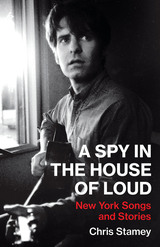 A Spy in the House of Loud: New York Songs and Stories
By Chris Stamey
University of Texas Press, 2018 Popular music was in a creative upheaval in the late 1970s. As the singer-songwriter and producer Chris Stamey remembers, “the old guard had become bloated, cartoonish, and widely co-opted by a search for maximum corporate profits, and we wanted none of it.” In A Spy in the House of Loud, he takes us back to the auteur explosion happening in New York clubs such as the Bowery’s CBGB as Television, Talking Heads, R.E.M., and other innovative bands were rewriting the rules. Just twenty-two years old and newly arrived from North Carolina, Stamey immersed himself in the action, playing a year with Alex Chilton before forming the dB’s and recording the albums Stands for deciBels and Repercussion, which still have an enthusiastic following. A Spy in the House of Loud vividly captures the energy that drove the music scene as arena rock gave way to punk and other new streams of electric music. Stamey tells engrossing backstories about creating in the recording studio, describing both the inspiration and the harmonic decisions behind many of his compositions, as well as providing insights into other people’s music and the process of songwriting. Photos, mixer-channel and track assignment notes, and other inside-the-studio materials illustrate the stories. Revealing another side of the CBGB era, which has been stereotyped as punk rock, safety pins, and provocation, A Spy in the House of Loud portrays a southern artist’s coming-of-age in New York’s frontier abandon as he searches for new ways to break the rules and make some noise.
A Spy in the House of Love
Anaïs Nin
Ohio University Press, 2014 Although Anaïs Nin found in her diaries a profound mode of self-creation and confession, she could not reveal this intimate record of her own experiences during her lifetime. Instead, she turned to fiction, where her stories and novels became artistic “distillations” of her secret diaries. A Spy in the House of Love, whose heroine Sabina is deeply divided between her drive for artistic and sexual expression and social restrictions and self-created inhibitions, echoes Nin’s personal struggle with sex, love, and emotional fragmentation. Written when Nin’s own life was taut with conflicting loyalties, her protagonist Sabina repeatedly asks herself, can one idulge one’s sensual restlessness, the fantasies, the relentless need for adventure without devastating consequences?
 Spy Sites of New York City: A Guide to the Region's Secret History
H. Keith Melton and Robert Wallace. With Henry R. Schlesinger. Foreword by Joseph Weisberg and Joel Fields, Executive Producers of The Americans
Georgetown University Press, 2020 Through every era of American history, New York City has been a battleground for international espionage, where secrets are created, stolen, and passed through clandestine meetings and covert communications. Some spies do their work and escape, while others are compromised, imprisoned, and—a few—executed. Spy Sites of New York City takes you inside this shadowy world and reveals the places where it all happened. In 233 main entries as well as listings for scores more spy sites, H. Keith Melton and Robert Wallace weave incredible true stories of derring-do and double-crosses that put even the best spy fiction to shame. The cases and sites follow espionage history from the Revolutionary War and Civil War, to the rise of communism and fascism in the twentieth century, to Russian sleeper agents in the twenty-first century. The spy sites are not only in Manhattan, Brooklyn, Queens, and the Bronx but also on Long Island and in New Jersey. Maps and 380 photographs allow readers to follow in the footsteps of spies and spy-hunters to explore the city, tradecraft, and operations that influenced wars hot and cold. Informing and entertaining, Spy Sites of New York City is a must-have guidebook to the espionage history of the Big Apple.
 Spy Sites of Philadelphia: A Guide to the Region's Secret History
H. Keith Melton and Robert Wallace. With Henry R. Schlesinger
Georgetown University Press An illustrated guide to the history of espionage in Philadelphia and the Delaware Valley. Philadelphia became a battleground for spies as George Washington’s Patriot army in nearby Valley Forge struggled to survive the winter of 1776-77. In the centuries that followed—through the Civil War, the rise of fascism and communism in the twentieth century, and today’s fight against terrorism—the city has been home to international intrigue and some of America’s most celebrated spies. Spy Sites of Philadelphia takes readers inside this shadowy world to reveal the places and people of Philadelphia’s hidden history. These fascinating entries portray details of stolen secrets, clandestine meetings, and covert communications through every era of American history. Along the way, readers will meet both heroes and villains whose daring deceptions helped shape the nation. Authors H. Keith Melton and Robert Wallace weave incredible true stories of courage and deceit that rival even the best spy fiction. Featuring over 150 spy sites in Philadelphia and its neighboring towns and counties, this illustrated guide invites readers to follow in the footsteps of moles and sleuths. Authoritative, entertaining, and informative, Spy Sites of Philadelphia is a must-have guidebook to the espionage history of the region.
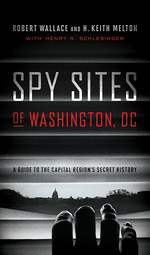 Spy Sites of Washington, DC: A Guide to the Capital Region's Secret History
Robert Wallace and H. Keith Melton. With Henry R. Schlesinger
Georgetown University Press, 2017 Washington Post Bestseller Washington, DC, stands at the epicenter of world espionage. Mapping this history from the halls of government to tranquil suburban neighborhoods reveals scores
of dead drops, covert meeting places, and secret facilities—a constellation of
clandestine sites unknown to even the most avid history buffs. Until now. Spy Sites of Washington, DC traces more than two centuries of secret history from the Mount Vernon study of spymaster George Washington to the Cleveland Park apartment of the “Queen of Cuba.” In 220 main entries as well as listings for dozens more spy sites, intelligence historians Robert Wallace and H. Keith Melton weave incredible true stories of derring-do and double-crosses that put even the best spy fiction to shame. Maps and more than three hundred photos allow readers to follow in the winding footsteps of moles and sleuths, trace the covert operations that influenced wars hot and cold, and understand the tradecraft traitors and spies alike used in the do-or-die chess games that have changed the course of history. Informing and entertaining, Spy Sites of Washington, DC is the comprehensive guidebook to the shadow history of our nation’s capital.
 The Spy Story
John G. Cawelti and Bruce A. Rosenberg
University of Chicago Press, 1987 Why has the spy story become such a popular form of entertainment in our time? In this fascinating account of the genre's evolution, John G. Cawelti and Bruce A. Rosenberg explore the social, political, and artistic sources of the spy story's wide appeal. They show how, in a time of bewildering political and corporate organization, the spy story has become increasingly relevant, the secret agent hero expressing the feelings of divided and ambiguous loyalties with which many individuals face the modern world.
In addition to a general history of the genre, Cawelti and Rosenberg present in-depth analyses of the work of certain writers who have given the spy story its shape, among them John Buchan, Eric Ambler, Graham Greene, Ian Fleming, and John le Carré. The Spy Story also includes an extensive appendix, featuring a literary and historical bibliography of espionage and clandestinity, a list of the best spy novels and films, a catalog of major spy writers and their heroes, and a selection of novels on espionage themes written by major twentieth-century authors and public figures.
Written in a lively style that reflects the authors' enthusiasm for this intriguing form, The Spy Story will be read with pleasure by devotees of the genre as well as students of popular culture.
 The Spy Who Loved Us: The Vietnam War and Pham Xuan An's Dangerous Game
Thomas A. Bass
University of Massachusetts Press, 2018 Pham Xuan An was one of the twentieth century's greatest spies. While working as a correspondent for Time during the Vietnam War, he sent intelligence reports—written in invisible ink or hidden inside spring rolls in film canisters—to Ho Chi Minh and his generals in North Vietnam.
Only after Saigon fell in 1975 did An's colleagues learn that the affable raconteur in their midst, acclaimed as "dean of the Vietnamese press corps," was actually a general in the North Vietnamese Army. In recognition of his tradecraft and his ability to spin military losses—such as the Têt Offensive of 1968—into psychological gains, An was awarded sixteen military medals.
After the book's original publication, WikiLeaks revealed that Thomas A. Bass's account of An's career was distributed to CIA agents as a primer in espionage. Now available in paper with a new preface, An's story remains one of the most gripping to emerge from the era.
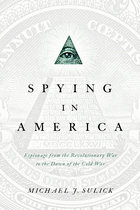 Spying in America: Espionage from the Revolutionary War to the Dawn of the Cold War
Michael J. Sulick
Georgetown University Press, 2012 Can you keep a secret? Maybe you can, but the United States government cannot. Since the birth of the country, nations large and small, from Russia and China to Ghana and Ecuador, have stolen the most precious secrets of the United States. Written by Michael Sulick, former director of CIA’s clandestine service, Spying in America presents a history of more than thirty espionage cases inside the United States. These cases include Americans who spied against their country, spies from both the Union and Confederacy during the Civil War, and foreign agents who ran operations on American soil. Some of the stories are familiar, such as those of Benedict Arnold and Julius Rosenberg, while others, though less well known, are equally fascinating. From the American Revolution, through the Civil War and two World Wars, to the atomic age of the Manhattan Project, Sulick details the lives of those who have betrayed America’s secrets. In each case he focuses on the motivations that drove these individuals to spy, their access and the secrets they betrayed, their tradecraft or techniques for concealing their espionage, their exposure and punishment, and the damage they ultimately inflicted on America’s national security. Spying in America serves as the perfect introduction to the early history of espionage in America. Sulick’s unique experience as a senior intelligence officer is evident as he skillfully guides the reader through these cases of intrigue, deftly illustrating the evolution of American awareness about espionage and the fitful development of American counterespionage leading up to the Cold War.
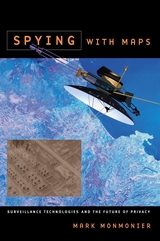 Spying with Maps: Surveillance Technologies and the Future of Privacy
Mark Monmonier
University of Chicago Press, 2002 Maps, as we know, help us find our way around. But they're also powerful tools for someone hoping to find you. Widely available in electronic and paper formats, maps offer revealing insights into our movements and activities, even our likes and dislikes. In Spying with Maps, the "mapmatician" Mark Monmonier looks at the increased use of geographic data, satellite imagery, and location tracking across a wide range of fields such as military intelligence, law enforcement, market research, and traffic engineering. Could these diverse forms of geographic monitoring, he asks, lead to grave consequences for society? To assess this very real threat, he explains how geospatial technology works, what it can reveal, who uses it, and to what effect.
Despite our apprehension about surveillance technology, Spying with Maps is not a jeremiad, crammed with dire warnings about eyes in the sky and invasive tracking. Monmonier's approach encompasses both skepticism and the acknowledgment that geospatial technology brings with it unprecedented benefits to governments, institutions, and individuals, especially in an era of asymmetric warfare and bioterrorism. Monmonier frames his explanations of what this new technology is and how it works with the question of whether locational privacy is a fundamental right. Does the right to be left alone include not letting Big Brother (or a legion of Little Brothers) know where we are or where we've been? What sacrifices must we make for homeland security and open government?
With his usual wit and clarity, Monmonier offers readers an engaging, even-handed introduction to the dark side of the new technology that surrounds us—from traffic cameras and weather satellites to personal GPS devices and wireless communications.
Squander
Elena Karina Byrne
Omnidawn, 2016 Squander occupies a place where “the mind’s upstairs windows [are] blown out”: a place of juxtapositional delight through sensory and conceptual dislocation. Poems based in word origins work as fables, and poems based in dialogue work within a select concordance from authors and artists. The consequent subject’s meaning is diverted and new vantage points are created. Squander’s energized music, its alliance with feeling’s final rhythm “makes us complicit” in the re-awaking of language.
 Squandered Advice
Ilse Aichinger
Seagull Books, 2022 The first English translation of a major work of postwar German poetry.
Austrian writer Ilse Aichinger (1921–2016) was a member of the Gruppe 47 writers’ group, which sought to renew German-language literature after World War II. From a wide-ranging literary career that encompassed all genres, Squandered Advice was Aichinger’s sole poetry collection. The book gathers poems written over several decades, yet Aichinger’s poetic voice remains remarkably consistent, frequently addressing us or a third party, often in the imperative, with many poems written in the form of a question. Even though they use free verse throughout, the poems are still tightly structured, often around sounds or repetition, using spare language. Phrases are often fragmentary, torn off, and juxtaposed as if in a collage. Isolated and haunting, the images are at times everyday, at other times surreal, suggesting dreams or memories. The tone ranges from reassuring and gentle to disjointed and disturbing, but the volume was carefully composed by the author into an integral whole, not chronological but following its own poetic logic. This new translation makes Aichinger’s critically acclaimed book, which has inspired poets in the German-speaking world for decades, available to English-language readers for the first time.
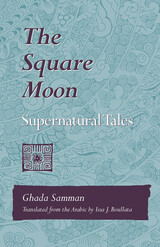 Square Moon: Supernatural Tales
Ghadah Samman
University of Arkansas Press, 1999 Marking collisions of culture and character, these ten short stories arise at the frontiers where Arabic tradition melds with both the modern European world and a Gothic strata of the supernatural. The resultant mix sparks tensions between the sexes, between identities, and between experimental forms of storytelling and strict narrative. In Samman’s fiction, matchmakers still come to call but lovers go bungee jumping. A schizophrenic has a discussion with one of his personalities about murder and relationships with women. Avoiding ghosts both real and imagined, a war exile confronts class structure; the art of Paris; and the trials of being a woman, an Arab, and a writer in a country and culture not her own. The spirit of a strangled lover tells the story of his murder and of the web of love, beauty, lust, and loathing that brought about his demise. First published in Beirut in 1994 and now ably rendered into English, Samman’s The Square Moon mixes the ghoulish with the everyday, the playful and witty with the terrifying, intermingling surprise endings, uncommon turns of plot, and the strange but realistic details of the characters’ lives.
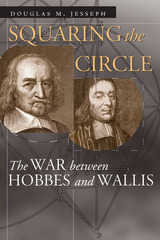 Squaring the Circle: The War between Hobbes and Wallis
Douglas M. Jesseph
University of Chicago Press, 1999 In 1655, the philosopher Thomas Hobbes claimed he had solved the centuries-old problem of "squaring of the circle" (constructing a square equal in area to a given circle). With a scathing rebuttal to Hobbes's claims, the mathematician John Wallis began one of the longest and most intense intellectual disputes of all time. Squaring the Circle is a detailed account of this controversy, from the core mathematics to the broader philosophical, political, and religious issues at stake.
Hobbes believed that by recasting geometry in a materialist mold, he could solve any geometric problem and thereby demonstrate the power of his materialist metaphysics. Wallis, a prominent Presbyterian divine as well as an eminent mathematician, refuted Hobbes's geometry as a means of discrediting his philosophy, which Wallis saw as a dangerous mix of atheism and pernicious political theory.
Hobbes and Wallis's "battle of the books" illuminates the intimate relationship between science and crucial seventeenth-century debates over the limits of sovereign power and the existence of God.
 Squatter Life: Persistence at the Urban Margins of Buenos Aires
Javier Auyero and Sofía Servián
Duke University Press, 2025 In Squatter Life, sociologist Javier Auyero and anthropologist Sofía Servián detail the diverse and often precarious strategies that Argentina’s urban poor rely on to survive. Blending three years of ethnographic fieldwork and anthropological theory with personal narratives of Servián’s experience growing up and living in a squatter settlement, the authors examine how Argentina’s squatter communities contend with violence and secure necessities like food, land, and housing despite inadequate state support and protection. Auyero and Servián recount the bricolage of tactics these individuals employ to make ends meet, such as relying on highly exploitative jobs, patronage, and networks of reciprocal exchange that can involve illicit activities. Analyzing how these survival strategies intersect with class, gender, and political domination, the authors present a nuanced account of marginality in Argentinian squatter settlements while maintaining a deeply human portrait of survival and persistence.
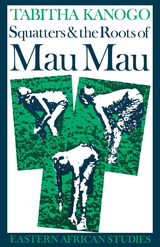 Squatters and the Roots of Mau Mau, 1905–1963
Tabitha Kanogo
Ohio University Press, 1987 This is a study of the genesis, evolution, adaptation and subordination of the Kikuyu squatter labourers, who comprised the majority of resident labourers on settler plantations and estates in the Rift Valley Province of the White Highlands. The story of the squatter presence in the White Highlands is essentially the story of the conflicts and contradictions that existed between two agrarian systems, the settler plantation economy and the squatter peasant option. Initially, the latter developed into a viable but much resented sub-system which operated within and, to some extent, in competition with settler agriculture. This study is largely concerned with the dynamics of the squatter presence in the White Highlands and with the initiative, self-assertion and resilience with which they faced their subordinate position as labourers. In their response to the machinations of the colonial system, the squatters were neither passive nor malleable but, on the contrary, actively resisted coercion and subordination as they struggled to carve out a living for themselves and their families…. It is a firm conviction of this study that Kikuyu squatters played a crucial role in the initial build-up of the events that led to the outbreak of the Mau Mau war. —from the introduction
The Squatters' Movement in Europe: Commons and Autonomy as Alternatives to Capitalism
Edited by Squatting Europe Kollective
Pluto Press, 2014 The Squatters' Movement in Europe is the first definitive guide to squatting as an alternative to capitalism. It offers a unique insider's view on the movement – its ideals, actions and ways of life. At a time of growing crisis in Europe with high unemployment, dwindling social housing and declining living standards, squatting has become an increasingly popular option.
The book is written by an activist-scholar collective, whose members have direct experience of squatting: many are still squatters today. There are contributions from the Netherlands, Spain, the USA, France, Italy, Germany, Switzerland and the UK.
In an age of austerity and precarity this book shows what has been achieved by this resilient social movement, which holds lessons for policy-makers, activists and academics alike.
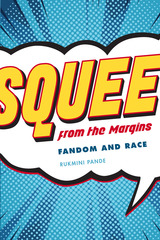 Squee from the Margins: Fandom and Race
Rukmini Pande
University of Iowa Press, 2018 Rukmini Pande’s examination of race in fan studies is sure to make an immediate contribution to the growing field. Until now, virtually no sustained examination of race and racism in transnational fan cultures has taken place, a lack that is especially concerning given that current fan spaces have never been more vocal about debating issues of privilege and discrimination. Pande’s study challenges dominant ideas of who fans are and how these complex transnational and cultural spaces function, expanding the scope of the field significantly. Along with interviewing thirty-nine fans from nine different countries about their fan practices, she also positions media fandom as a postcolonial cyberspace, enabling scholars to take a more inclusive view of fan identity. With analysis that spans from historical to contemporary, Pande builds a case for the ways in which non-white fans have always been present in such spaces, though consistently ignored.
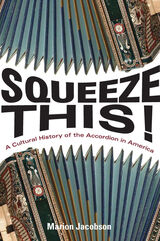 Squeeze This!: A Cultural History of the Accordion in America
Marion Jacobson
University of Illinois Press, 2012 No other instrument has witnessed such a dramatic rise to popularity--and precipitous decline--as the accordion. Squeeze This! is the first history of the piano accordion and the first book-length study of the accordion as a uniquely American musical and cultural phenomenon. Ethnomusicologist and accordion enthusiast Marion Jacobson traces the changing idea of the accordion in the United States and its cultural significance over the course of the twentieth century. From the introduction of elaborately decorated European models imported onto the American vaudeville stage and the instrument's celebration by ethnic musical communities and mainstream audiences alike, to the accordion-infused pop parodies by "Weird Al" Yankovic, Jacobson considers the accordion's contradictory status as both an "outsider" instrument and as a major force in popular music in the twentieth century. Drawing on interviews and archival investigations with instrument builders and retailers, artists and audiences, professionals and amateurs, Squeeze This! explores the piano accordion's role as an instrument of community identity and its varied musical and cultural environments. Jacobson concentrates on six key moments of transition: the Americanization of the piano accordion, originally produced and marketed by sales-savvy Italian immigrants; the transformation of the accordion in the 1920s from an exotic, expensive vaudeville instrument to a mass-marketable product; the emergence of the accordion craze in the 1930s and 1940s, when a highly organized "accordion industrial complex" cultivated a white, middle-class market; the peak of its popularity in the 1950s, exemplified by Lawrence Welk and Dick Contino; the instrument's marginalization in the 1960s and a brief, ill-fated effort to promote the accordion to teen rock 'n' roll musicians; and the revival beginning in the 1980s of the accordion as a "world music instrument" and a key component for cabaret and burlesque revivals and pop groups such as alternative experimenters They Might Be Giants and polka rockers Brave Combo. Loaded with dozens of images of gorgeous instruments and enthusiastic performers and fans, Squeeze This! A Cultural History of the Accordion in America represents the accordion in a wide range of popular and traditional musical styles, revealing the richness and diversity of accordion culture in America.
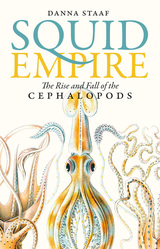 Squid Empire: The Rise and Fall of the Cephalopods
Danna Staaf
University Press of New England, 2017 Before there were mammals on land, there were dinosaurs. And before there were fish in the sea, there were cephalopods—the ancestors of modern squid and Earth’s first truly substantial animals. Cephalopods became the first creatures to rise from the seafloor, essentially inventing the act of swimming. With dozens of tentacles and formidable shells, they presided over an undersea empire for millions of years. But when fish evolved jaws, the ocean’s former top predator became its most delicious snack. Cephalopods had to step up their game. Many species streamlined their shells and added defensive spines, but these enhancements only provided a brief advantage. Some cephalopods then abandoned the shell entirely, which opened the gates to a flood of evolutionary innovations: masterful camouflage, fin-supplemented jet propulsion, perhaps even dolphin-like intelligence. Squid Empire is an epic adventure spanning hundreds of millions of years, from the marine life of the primordial ocean to the calamari on tonight’s menu. Anyone who enjoys the undersea world—along with all those obsessed with things prehistoric—will be interested in the sometimes enormous, often bizarre creatures that ruled the seas long before the first dinosaurs.
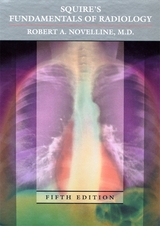 Squire’s Fundamentals of Radiology: Fifth Edition
Robert A. Novelline, M.D.
Harvard University Press, 1997 This new edition of Fundamentals of Radiology brings up to date the consummate, classic work by Lucy Frank Squire and Robert A. Novelline that has introduced generations of medical students to radiology.
The standard introductory text for more than thirty years, Fundamentals of Radiology is a model of clarity and comprehensiveness. Robert Novelline continues that tradition by thoroughly updating and expanding this edition to reflect the latest types and uses of imaging techniques. Complementing the text are many superb reproductions of plain film, computed tomography, magnetic-resonance, and ultrasound images--hundreds of them new to this edition. In addition, Novelline has added five important chapters. A new chapter near the beginning of the book provides an atlas of drawings and images that allows the reader to review normal plain film and CT anatomy. Another new chapter is devoted to vascular imaging, including CT angiography, MR angiography, and vascular ultrasound, especially full-color Doppler ultrasound images. The chapter on interventional radiology covers therapeutic procedures performed by radiologists, such as angioplasty, embolization, and percutaneous biopsy. To address the different medical conditions of males, females, and children, another new chapter examines the imaging of obstetrical, gynecological, testicular, prostate, and urethral disorders, and considers a variety of childhood ailments and problems, including child abuse. Finally, a new chapter on TB and AIDS shows how radiology can track the course of a single disease over time and trace the depredations of a multisystem disease.
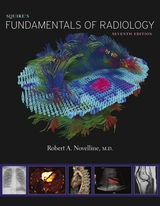 Squire’s Fundamentals of Radiology: Seventh Edition
Robert A. Novelline, M.D.
Harvard University Press, 2018 Medical students preparing for a career in clinical practice must become familiar with a wide range of diagnostic imaging techniques and image-guided interventions. They must learn to identify the indications for radiological examination and recognize the role each procedure plays in the workup, diagnosis, and therapeutic management of patients. That is why Squire’s Fundamentals of Radiology has been such an important, long-standing resource for medical students, physicians, and other professionals at all stages of their careers. It teaches essential topics in the radiology curriculum and features hundreds of illustrative cases clinicians can turn to again and again in practice.
In this long-awaited seventh edition, Robert Novelline provides more than 600 new high-resolution images representing the current breadth of radiological procedures: conventional x-rays, ultrasound, computed tomography (CT), magnetic resonance imaging (MRI), angiography, radioisotope scanning, positron emission tomography (PET), and molecular imaging. This edition’s expanded coverage addresses dual energy CT, breast tomosynthesis, PET-MR scanning, and tractography brain imaging, along with best practices for managing patient experiences during and after examination. All new images were produced at a major teaching hospital using state-of-the-art imaging technologies.
Squire’s Fundamentals of Radiology is designed to be read cover to cover by students, with concepts, principles, and methods progressing in a logical, cumulative manner. It also serves as an invaluable tool for teachers and an indispensable reference for seasoned practitioners. Written by a radiologist who has trained thousands of medical students and residents, this textbook is the clear choice for excelling in the general practice of radiology.
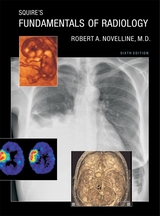 Squire’s Fundamentals of Radiology: Sixth Edition
Robert A. Novelline, M.D.
Harvard University Press In the past five years, the development of new imaging technologies that make possible faster and more accurate diagnoses has significantly improved the imaging of disease and injury. This new edition of Squire’s Fundamentals of Radiology describes and illustrates these new techniques to prepare medical students and other radiology learners to provide the most optimal and up-to-date imaging management for their patients. Not only are new diagnostic techniques outlined, such as the multidetector computed tomography diagnosis of pulmonary embolism and the diffusion-weighted magnetic-resonance imaging of stroke, but hundreds of new diagnostic images have been included to illustrate the radiological characteristics of common diseases with state-of-the-art computed radiography, ultrasound, multidetector computed tomography, and magnetic-resonance images. The text has been completely reviewed and updated to present the latest and best strategies in diagnostic imaging.New interventional radiology procedures have been added, including vertebroplasty, a percutaneous injection treatment of painful spinal compression fractures; uterine artery embolization, a surgical alternative to hysterectomy in women with painful or bleeding uterine fibroids; and radiofrequency ablation, a percutaneous technique for treating unresectable tumors in the liver and other organs with probes that superheat and thus destroy cancer cells.A new chapter on advances in diagnostic imaging describes many cutting-edge imaging technologies, such as three-dimensional and digital imaging, functional magnetic-resonance imaging, PET–CT (positron emission tomography combined with computed tomography), cardiac calcium CT scoring, multidetector gated cardiac CT, and molecular imaging.
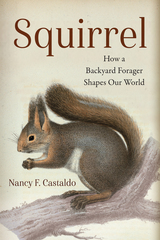 Squirrel: How a Backyard Forager Shapes Our World
Nancy F. Castaldo
Island Press, 2025 Squirrels are a common sight, seemingly everywhere in wild and urban nature. Their chattering antics in city parks delight us while their raids on our backyard gardens and birdfeeders never fail to exasperate. But squirrels are more than amusing backyard entertainers, and few of us know much about them or fully appreciate their role in keeping the environment healthy. As stress on the natural world intensifies, should we be paying more attention to the plight of squirrels?
In Squirrel, Nancy Castaldo shines new light on this familiar backyard mammal, exploring their staggering diversity (they’re found on all continents but Antarctica) and the many surprising ways they shape our world, our communities, and our cultures. Each chapter explores an aspect of squirrels and their close and sometimes fraught association with humans: their importance to myriad ecosystems through sophisticated food-caching strategies; their introduction to nineteenth-century urban parks as adorable ambassadors for nature; their complicated global status as both invasive and endangered; their role as celebrated cultural icons and social media memes; and ultimately, why we must prevent population declines and protect their well-being while we can. Like other wildlife species, squirrels are increasingly stressed by climate change, and their speculative fate may foreshadow our own. The book includes a detailed bibliography, an exhaustive list of squirrel species and their status, and tips for coexisting peaceably with squirrels in our yards and neighborhoods. Chapters are introduced by exquisitely drawn historical illustrations.
Sri Lanka at the Crossroads of History
Edited by Zoltán Biedermann and Alan Strathern
University College London, 2017 Sri Lanka has been at the center of far-flung networks for millennia—a key part of trade routes, the spread of religions, and Asian and European empires. This book sets out to use contemporary scholarship that focuses on that role as a crossroads to set Sri Lanka more firmly in the fields of Asian and global history. Contributors draw on the archaeology, history, literature, and art of the island from 500 BCE to 1850 CE to explore a number of pressing scholarly debates. Showing the subtle ways in which foreign elements can be simultaneously resisted and embraced, the book presents a distinctive, but deeply connected, Sri Lanka, one that is defined by its openness to movement across the Indian Ocean.
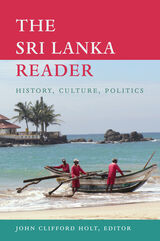 The Sri Lanka Reader: History, Culture, Politics
John Clifford Holt, ed.
Duke University Press, 2011 The Sri Lanka Reader is a sweeping introduction to the epic history of the island nation located just off the southern tip of India. The island’s recorded history of more than two and a half millennia encompasses waves of immigration from the South Asian subcontinent, the formation of Sinhala Buddhist and Tamil Hindu civilizations, the arrival of Arab Muslim traders, and European colonization by the Portuguese, then the Dutch, and finally the British. Selected texts depict perceptions of the country’s multiple linguistic and religious communities, as well as its political travails after independence in 1948, especially the ethnic violence that recurred from the 1950s until 2009, when the Liberation Tigers of Tamil Eelam were defeated by the Sri Lankan government’s armed forces. This wide-ranging anthology covers the aboriginal Veddhas, the earliest known inhabitants of the island; the Kings of Kandy, Sri Lanka’s last indigenous dynasty; twenty-first-century women who leave the island to work as housemaids in the Middle East; the forty thousand Sri Lankans killed by the tsunami in December 2004; and, through cutting-edge journalism and heart-wrenching poetry, the protracted violence that has scarred the country’s contemporary political history. Along with fifty-four images of paintings, sculptures, and architecture, The Sri Lanka Reader includes more than ninety classic and contemporary texts written by Sri Lankans and foreigners.
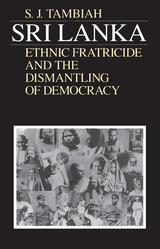 Sri Lanka--Ethnic Fratricide and the Dismantling of Democracy
Stanley Jeyaraja Tambiah
University of Chicago Press, 1986 Focusing on the historical events of post-independence Sri Lanka, S. J. Tambiah analyzes the causes of the violent conflict between the majority Sinhalese Buddhists and the minority Tamils. He demonstrates that the crisis is primarily a result of recent societal stresses—educational expansions, linguistic policy, unemployment, uneven income distribution, population movements, contemporary uses of the past as religious and national ideology, and trends toward authoritarianism—rather than age-old racial and religious differences.
"In this concise, informative, lucidly written book, scrupulously documented and well indexed, [Tambiah] trains his dispassionate anthropologist's eye on the tangled roots of an urgent, present-day problem in the passionate hope that enlightenment, understanding, and a generous spirit of compromise may yet be able to prevail."—Merle Rubin, Christian Science Monitor
"An incredibly rich and balanced analysis of the crisis. It is exemplary in highlighting the general complexities of ethnic crises in long-lived societies carrying a burden of historical memories."—Amita Shastri, Journal of Asian Studies
"Tambiah makes an eloquent case for pluralist democracy in a country abundantly endowed with excuses to abandon such an approach to politics."—Donald L. Horowitz, New Republic
"An excellent and thought-provoking book, for anyone who cares about Sri Lanka."—Paul Sieghart, Los Angeles Times Book Review
Śṛṅgāraprakāśa of Bhoja
Venkatarama Raghavan
Harvard University Press This edition is based on new manuscripts of this important treatise on classical Sanskrit poetics. It was composed by the famous eleventh-century King Bhoja of Malwa (West India), a patron of traditional learning.
The text has never received a complete critical edition. It is important not only because of the theoretical treatment of the erotic sentiment (śṛṅgāra) in classical Sanskrit texts. It is also a mine of quotations from extant and also from lost Sanskrit and Prakrit poetical texts.
Śṛṅgāraprakāśa of Bhoja
Venkatarama Raghavan
Harvard University Press, 1998 This edition is based on new manuscripts of this important treatise on classical Sanskrit poetics. It was composed by the famous eleventh-century King Bhoja of Malwa (West India), a patron of traditional learning.
The text has never received a complete critical edition. It is important not only because of the theoretical treatment of the erotic sentiment (śṛṅgāra) in classical Sanskrit texts. It is also a mine of quotations from extant and also from lost Sanskrit and Prakrit poetical texts.
Śṛṅgāraprakāśa of Bhoja
Venkatarama Raghavan
Harvard University Press This edition is based on new manuscripts of this important treatise on classical Sanskrit poetics by the famous eleventh-century King Bhoja of Malwa. The text is important because of the theoretical treatment of the erotic sentiment (śṛṅgāra) in classical Sanskrit texts, and also as a mine of quotations from Sanskrit and Prakrit poetical texts.
SS Australis
Bert Lamers
Amsterdam University Press, 2024 The ss 'Australis' was a well known ocean liner which entered service in 1940 as the
ss 'America' for the United States Lines. The ship was sold to the Greek Chandris Lines in 1964 and served until 1977 very succesfully on the route Western-Europe-Australia-New Zealand. Later the route became a full round-the-world-service. After her Australian period the liner sailed under the names of 'America' (for the third time), 'Italis', 'Noga', 'Alferdoss' and finally 'American Star'. In this volume of Liners the history of the great liner from when she was purchased by the Greek interest in 1964 until her sad wracking in January 1994.
SSR vol 87 num 1
The University of Chicago Press
University of Chicago Press Journals, 2013
SSR vol 87 num 2
The University of Chicago Press
University of Chicago Press Journals, 2013
SSR vol 87 num 3
The University of Chicago Press
University of Chicago Press Journals, 2013
SSR vol 87 num 4
The University of Chicago Press
University of Chicago Press Journals, 2013
SSR vol 88 num 1
The University of Chicago Press
University of Chicago Press Journals, 2014
SSR vol 88 num 2
The University of Chicago Press
University of Chicago Press Journals, 2014
SSR vol 88 num 3
The University of Chicago Press
University of Chicago Press Journals, 2014
SSR vol 88 num 4
The University of Chicago Press
University of Chicago Press Journals, 2014
SSR vol 89 num 1
The University of Chicago Press
University of Chicago Press Journals, 2015
SSR vol 89 num 2
The University of Chicago Press
University of Chicago Press Journals, 2015
SSR vol 89 num 3
The University of Chicago Press
University of Chicago Press Journals, 2015
SSR vol 89 num 4
The University of Chicago Press
University of Chicago Press Journals, 2015
SSR vol 90 num 1
The University of Chicago Press
University of Chicago Press Journals, 2016
SSR vol 90 num 2
The University of Chicago Press
University of Chicago Press Journals, 2016
SSR vol 90 num 3
The University of Chicago Press
University of Chicago Press Journals, 2016
SSR vol 90 num 4
The University of Chicago Press
University of Chicago Press Journals, 2016
SSR vol 91 num 1
The University of Chicago Press
University of Chicago Press Journals, 2017
SSR vol 91 num 2
The University of Chicago Press
University of Chicago Press Journals, 2017
SSR vol 91 num 3
The University of Chicago Press
University of Chicago Press Journals, 2017
SSR vol 91 num 4
The University of Chicago Press
University of Chicago Press Journals, 2017
SSR vol 92 num 1
The University of Chicago Press
University of Chicago Press Journals, 2018
SSR vol 92 num 2
The University of Chicago Press
University of Chicago Press Journals, 2018
SSR vol 92 num 3
The University of Chicago Press
University of Chicago Press Journals, 2018
SSR vol 92 num 4
The University of Chicago Press
University of Chicago Press Journals, 2018
SSR vol 93 num 1
The University of Chicago Press
University of Chicago Press Journals, 2019
SSR vol 93 num 2
The University of Chicago Press
University of Chicago Press Journals, 2019
SSR vol 93 num 3
The University of Chicago Press
University of Chicago Press Journals, 2019
SSR vol 93 num 4
The University of Chicago Press
University of Chicago Press Journals, 2019
SSR vol 94 num 1
The University of Chicago Press
University of Chicago Press Journals, 2020
SSR vol 94 num 2
The University of Chicago Press
University of Chicago Press Journals, 2020
SSR vol 94 num 3
The University of Chicago Press
University of Chicago Press Journals, 2020
SSR vol 94 num 4
The University of Chicago Press
University of Chicago Press Journals, 2020
St. Anselm's Proslogion: With a Reply on Behalf of the Fool by Gaunilo and The Author's Reply to Gaunilo
St. Anselm
University of Notre Dame Press, 1979 In the Proslogion, St. Anselm presents a philosophical argument for the existence of God. Anselm's proof, known since the time of Kant as the ontological argument for the existence of God, has played an important role in the history of philosophy and has been incorporated in various forms into the systems of Descartes, Leibniz, Hegel, and others. Included in this edition of the Proslogion are Gaunilo's "A Reply on Behalf of the Fool" and St. Anselm's "The Author's Reply to Gaunilo." All three works are in the original Latin with English translation on facing pages. Professor Charlesworth's introduction provides a helpful discussion of the context of the Proslogion in the theological tradition and in Anselm's own thought and writing.
St. Augustine's Interpretaion of the Psalms of Ascent
Gerard McLarney
Catholic University of America Press, 2014 Recent research has explored how past interpretation can help contextualize current interpretation as well as provide a more colorful and theologically meaningful understanding of scripture. In St. Augustine's Interpretation of the Psalms of Ascent, Gerald McLarney examines Augustine of Hippo's (d. 430) interpretation of the ascent motif in sermons on Psalms 119-133. He looks at the delivery, transmission, and broader context of the sermons, as well as examining the sermons as they stand.
|
|
